












Inthe backdrop of the recent ABC program Four Corners which exposed the underbelly of the Indian community in Australia with its expose on scams and rackets in the overseas student market, it needs to be pointed out that the community has in the past 25 years built up a wonderful reputation for itself.
The recent student issues have allowed a debate to rage on various websites where the theme is generally India bashing – be it the outsourcing of Australian jobs to India, Indian call centres or the loss of education places for local Australians to Indian overseas students.

Little attention has been paid to the meaningful contribution which Indians bring to the mainstream.
Indian-origin Australians are widely acknowledged as hard working, ethical, honest with strong family values. Former Premier of NSW Hon Bob Carr often recounted that at school education award presentations, the Indian community seems to be over-represented. The high academic achievement of the Indian diaspora in UAI and VCE results does not go unnoticed.
Indian Australians are well respected at their place of work as well: be it for their hard work or intelligence.
They have also been known to be good, law abiding citizens by and large. There are limited cases of involvement in drugs, alcohol-related crimes, domestic problems or general law and order breakdowns in
By Pawan Luthrathe Indian Australian community.
True, there are always exceptions to the rule, but overall, Indians in Australia prefer to enjoy the many benefits this country offers them rather than to exploit their new home.
Over the years, the community has come into its own. We may not have major politicians of Indian background at the State or Federal level. However, it is but a matter of time before one emerges –one who understands the concerns of the community and articulates them to the law makers.

And true, we do not have a sportsperson of Indian origin in any Australian sport making a name for themselves. Again, noting the passion with which Australia’s second most popular sport, cricket, is played by many young Indian Australians, it will also be a matter of time before an Aussie wicket keeper shouts out, “Well bowled, Singh/Gupta!”
Business leaders who represent the Indian Australian community have emerged prominently in the local community. Ravi Bhatia, founder of I-primus is one of them; Ashok Jacob is in the inner coterie of advisors to Australia’s

billionaire James Packer, and ex-chairman of Fujitsu Neville Roach is well-known for his efforts to bring Australia closer to India. In these personalities, we certainly have a group of Indian Australians who have reached the very pinnacle in their chosen industry. Indian IT companies in Australia such as Tatas, HCL, Mphasis etc are also making a strong mark in their own industry. They meet and market to top Australian companies and take responsibility for many millions of dollars of work and investment in Australia and India.
And finally, for those detractors lamenting the loss of local jobs as work is outsourced to India, consider this: Indian holiday-makers are contributing to Australia’s tourism industry larger numbers than ever before. A vast number of these are probably call-centre workers who can now afford overseas holidays, and are choosing to bring their tourism dollar to this country. Who knows, it might be those very call-centre families that are sending their kids here as students, contributing directly to that oft-quoted number of $15 billion, and making up Australia’s thirdlargest industry.






What does ‘India’ mean to you? does it evoke images of the snow-capped himalayas, the lush green jungles of Kerala or monuments ranging from the taj Mahal to the ancient temples of Khajuraho? does it bring back happy memories of childhood and family, of places and things that made you feel proud to be Indian? or do you simply know it as the land of the Vedas and the more famous Kamasutra? celebrates its 62nd year of Independence, we look at some of the things that are, globally, distinctly ‘Indian’.
Mahatma Gandhi, the Father of the Nation, played a pivotal role in India’s fight for independence from British rule. he was undoubtedly the most important political and spiritual leader of India during the independence movement. he pioneered the concept of satyagraha, an unusual
Mahatma Gandhi. In 1969, the UK issued a series of stamps commemorating the centenary of Mahatma Gandhi.
An ancient civilisation
India’s history and culture are ancient and dynamic. It began with the Indus Valley civilization around 3000 BC, a mysterious culture along the Indus River. settlement sites like Mohenjo-daro, harappa and Lothal constituted the inhabitants of the Indus River valley, which developed an urban culture based on commerce and sustained by agricultural trade. this civilization declined around 1500 B.C., probably due to ecological changes. during the second millennium B.C., pastoral, aryan-speaking tribes migrated from the northwest into the subcontinent. as they settled in the
stance of resistance to tyranny through non-violence, which has since inspired movements for civil rights and freedom across the globe. Gandhiji led by example, speaking the truth at all times, living modestly in a self-sufficient community, wearing the traditional dhoti and shawl woven on a hand-spun charka he ate simple vegetarian food and fasted, both for self-purification and social protest.

Time magazine named Gandhiji the Man of the Year in 1930, and he was also runner-up to albert einstein as Person of the Century at the end of 1999. time also named the dalai Lama, Lech Walesa, dr. Martin Luther King, Jr., Cesar Chavez, aung san suu Kyi, Benigno aquino, Jr., desmond tutu and Nelson Mandela as Children of Gandhi and his spiritual heirs to non-violence. Gandhi never received the Nobel Peace Prize, although he was nominated five times between 1937 and 1948. he was to receive the Prize in 1948, but his assassination prevented the award, and when the dalai Lama was awarded the Prize in 1989, the chairman of the committee said that this was “in part a tribute to the memory of Mahatma Gandhi.”
Gandhi’s birthday on october 2 is a national holiday in India. the UN General assembly marks the day as International day of Non-Violence. India observes January 30, the day of his assassination, as Martyr’s day, to commemorate those who gave up their lives in service of the nation.
In New delhi, Birla house, where Gandhiji was assassinated on 30 January 1948, is open to the public as the Gandhi smriti or “Gandhi Remembrance”. It preserves the room where Mahatma Gandhi lived the last four months of his life and the grounds where he was shot while holding his nightly public walk. a Martyr’s Column now marks the place where Gandhiji fell. on the same day, schools in many countries observe the school day of Non-violence and Peace (deNIP), founded in spain in 1964.
today, all the currency notes in circulation in India contain a portrait of
middle Ganges River valley, they adapted to antecedent cultures.
the political map of medieval India was made up of myriad kingdoms with fluctuating boundaries. In the 4th and 5th centuries a d., northern India was unified under the Gupta Dynasty. During this period, known as India’s Golden age, hindu culture and political administration reached new heights. Large parts of India were united under ashoka. he converted to Buddhism, and oversaw the spread of Buddhism to other parts of asia. In Under the Mauryas hinduism took the shape that fundamentally informs the religion down to the present day. Islam came to India in the 8th century, and by the 11th century had firmly established itself as a political force; the dynasties of the Lodhis, tughlaqs and others, whose remains are visible around north India, were finally succeeded by the Mughal empire, under which India once again achieved a measure of political unity.
european presence in India dates to the 17th century. Towards the end of this century, the Mughal empire began to disintegrate, paving the way for regional states. In the contest for supremacy, the english emerged ‘victors’, their rule marked by the conquests at the battlefields of Plassey and Buxar.
The Rebellion of 1857-58, which sought to restore Indian supremacy, was crushed; and with the crowning of Victoria as
empress of India, the incorporation of India into the empire was complete. successive campaigns had the effect of driving the British out of India in 1947.
the history of India is punctuated by constant integration with migrating peoples and with the diverse cultures that surround India. Because of its central location, it became a crossroad of cultures from China to europe.
India’s history is more than just a set of unique developments in a definable process; it is, in many ways, a microcosm of human history itself, a diversity of cultures all impinging on a great people and being reforged into new synergies.
India is a country of 1.14 billion, with a vast diversity of culture and religion. Yet it is amazing is that its peoples live in harmony, not just with each other, but also with their differing beliefs and faiths. statistics recorded in 2005 indicate that the population can be broken up into hindu 72.04%, Muslim 12.26% (Sunni 8.06%, Shi’a 4.20%), Christian 6.81% (Protestant 1.74%, Roman Catholic 1.62%, Orthodox 0.22%, other Christian 3.22%), traditional beliefs 3.83%, Sikh 1.87%, Buddhist 0.67%, Jain 0.51%, Baha’i 0.17%, Parsi (Zoroastrian) 0.02%, nonreligious 1.22%, atheist 0.17%, other 0.43%.
Religion is very important in India: it is a way of life and an integral part of the entire

Indian society. In fact India has the second largest population of Muslims in the world after Indonesia.
the underlying tenets of hinduism cannot be easily defined, as no unique philosophy forms the basis of the hindu faith. hinduism is so diversified in its theoretical premises and practical expressions that it has been called a “museum of religions”. this religion cannot be traced to a specific founder nor does it have a “holy book” as a basic scriptural guide. The Rig Veda, Upanishads and the Bhagwad Gita can all be described as the sacred text of the hindus.

Unlike other religions, hinduism does not advocate the worship of one particular deity. one may worship shiva or Vishnu or Rama or Krishna or some other gods and goddesses or one may believe in the ‘supreme spirit’ or the ‘Indestructible soul’ within each individual, and still be called a good hindu. Festivals and ceremonies are associated not just with gods and goddesses but also with the natural elements. the popular festivals deepawali, holi, dussehra, Ganesh Chaturthi, Janamasthmi and shiva Ratri, lend hinduism its amazing popular appeal and make its traditions rich and colourful.

Religion permeates every aspect of life, from common-place daily chores to education and politics. Common practices have crept into most religious faiths in India, and many of the festivals that mark each year with music, dance and feasting
Indian tradition. It is at the root of moral and social norms and behaviours which have shaped the country’s destiny to date. the majority of the population practice hinduism. Within this majority, there are significant differences in the belief systems and caste divisions. But hindus will all go to revered pilgrimage sites, and if they go to a Brahman priest for a birth, marriage and/or death rituals, they will hear the same sanskrit verses dating from hundreds of years.
Muslims are the most prominent other religious group and are an integral part of
are shared by all communities. It is common to see festivals like holi, diwali, even eid and Christmas being celebrated with enthusiasm and vigour by all communities, regardless of their religious backgrounds. each religion has its own pilgrimage sites, heroes, legends and culinary specialities, but their ability to intermingle in a sense of unity has created a unique diversity that is the very pulse of society.
Religious tolerance is the hallmark of a secular country, and India rightly claims to be one. Citizens are permitted to freely practice their faiths in a spirit of harmony.
“My life is my message.”
SHERYL DIXIT savours the multitude of complex flavours that make contemporary India what it is
Curry!
That’s the synonym by which Indian cuisine is characterised globally, much to the annoyance of Indians. Indian cuisine is rich in its cultural diversity, encompassing not just regions, but flavours, condiments, herbs, spices, vegetables and cooking techniques that are individual to states, communities and even traditions. Indian cuisine reflects its ethnic diversity, while religious beliefs too have played an influential role in the evolution of its cuisine. Cross-cultural interactions with the Middle East and Central Asia, with a touch of the Mediterranean make it a unique culinary
baked flat breads like nan. Chicken and meat are a part of this range, with thick dairybased gravies or tandoori-cooked victuals. Paneer (cottage cheese) is popular in this cuisine. The internationally acclaimed Rogan Josh hails from this region. On the other hand, East Indian cooking is famous for its sweets like rasagolla, sandesh, etc. Traditional dishes are delicately spiced and fish is commonly consumed. South Indian cuisine is distinguished by a greater emphasis on rice as the staple grain, the ubiquity of sambar and rasam, a variety of pickles, and the liberal use of coconut and particularly coconut oil and curry leaves. Vegetable stews cooked with spices,
beneficial effects for preventing and treating certain cancers, treating infectious disease, promoting health and treating aging. Mechanisms underlying these effects include free-radical scavenging effects, immune system modulation, brain neurotransmitter modulation and hormonal effects.
All matter is thought to be composed of five basic elements which exhibit the properties of earth (prithvi), water (jala), fire (tejas), wind (vayu) and space (akasha). These elements do not exist in isolated forms, but always in a combination, in which one or more elements dominate. According to ayurveda, the human body is composed of derivatives of the five basic elements, in the form of doshas, tissues (dhatus) and waste products (malas). The most fundamental and characteristic principle of ayurveda is called “tridosha” or the Three Humours. Doshas are the physiological factors of the body, seen as all pervasive, subtle entities, and are categorized into vata, pitta and kapha. Vata regulates movement and is represented by the nervous system. Pitta is the principle of biotransformation - the cause of all metabolic processes in the body. Kapha is the principle of cohesion and functions through the body fluids. Together, these three doshas determine the physiologic constitution of an individual.
Ayurveda strongly recommends contentment in spirit, mind and body, but
financial services institutions (BFSI) accounted for 41% of the export pie in FY08, while telecom and manufacturing contributed 20% and 17%, respectively.
Other major verticals include retail, healthcare, airline and transportation, construction and utilities and media.
The US continues to remain the key market for Indian IT companies, accounting for 67.2% of the software and services (including BPO) exports from India. With a 26% stake in EU, Indian companies are looking at the European region as a potential market for exports and also to expand their global presence.
Building on its existing strengths, India will remain the biggest pool of lowcost global knowledge workers for the foreseeable future, with more than double the combined total in its nearest rivals, China, Vietnam, Philippines and Russia. However, it faces a shortfall of 500,000 people by 2010 unless it steps up training. Likewise, with an industry attrition level hovering around 20-25% (often higher for smaller players), companies are likely to offer an increase of 10-15% in salaries in the coming years.
It all began in 1950s, when Jawaharlal Nehru laid the foundation for IITs and IIScs building a large scientific workforce, second only to US and Russia. Proficiency in English and strong technical foundation worked in their favour. In the late ‘60s,
blend that is a gourmand’s delight.
As a land that has experienced extensive immigration and intermingling through many millennia, India’s cuisine has benefited from numerous food influences. Around 7000 BC, sesame, eggplant, and humped cattle had been domesticated in the Indus Valley and by 3000 BC, turmeric, cardamom, black pepper and mustard were harvested in India. Many recipes first emerged during the initial Vedic period, when India was still heavily forested and agriculture was complemented with game hunting and forest produce. In Vedic times, a normal diet consisted of fruit, vegetables, meat, grain, dairy products and honey. Over time, some segments of the population embraced vegetarianism, due to the Hindu philosophy of ahimsa. This practice gained more popularity following the advent of Buddhism and a cooperative climate where fruits, vegetable, and grains could easily be grown throughout the year.
Later, invasions from Central Asia, Arabia, the Mughal empire and Persia, had a fundamental effect on Indian cooking. Influence from traders such as the Arab and Portuguese diversified subcontinental tastes and meals. As with other cuisines, Indian cuisine has absorbed New World vegetables such as tomato, chilli and potato as staples. These are actually relatively recent additions.
Islamic rule introduced rich gravies, pilafs and non-vegetarian fare such as kebabs, resulting in Mughlai cuisine, as well as such fruits as apricots, melons, peaches and plums. The Mughals were great patrons of cooking. Lavish dishes were prepared during the reigns of Jahangir and Shah Jahan. The Nizams of Hyderabad meanwhile developed and perfected their own style of cooking with the most notable dish being the Biryani.
Indian cuisine is distinct to regions, with North Indian cuisine for example, featuring
tamarind and other ingredients, dosas, poori, idli, vada, bonda and bajji are typical South Indian favourites. West Indian cuisine encompasses Goan, Maharashtrian and Gujarati cuisine, and each is distinct in flavour and ingredients. While Maharastrian and Goan cuisine depend more on rice, coconut and fish, Gujarati cuisine is predominantly vegetarian with a distinct hint of sweetness due to the use of jaggery (brown sugar). Goan cuisine is influenced by Portuguese colonization. And food from the North East remains influenced by its neighbours Burma and China.
Indian cuisine is a feast for the tastebuds and comes a long way from the ubiquitous ‘curry’.

Ayurveda has existed in India for thousands of years, but has only recently been globally accepted as an alternative medicine. Historians cannot specify exactly when ayurveda came into being, but most agree that its texts were written between 3,500 and 5,000 years ago. This traditional, natural system of medicine enjoys huge popularity in India as well as global acclaim. It provides an integrated approach to preventing and treating illness through lifestyle interventions and natural therapies. Ayurvedic theory states that all disease begins with an imbalance or stress in the individual’s consciousness.

In India, ayurvedic practitioners receive state- recognized, institutionalized training in parallel to their physician counterparts in state-supported systems for conventional Western biomedicine. Studies have documented reductions in cardiovascular disease risk factors including blood pressure, cholesterol and reaction to stress, thanks to ayurvedic methods.
Clinical studies on ayurvedic herbal preparations and therapies have shown them to have a range of potentially
does not insist on acceptance or belief in this philosophy to ensure a cure. However, it does provide a deeper insight into how ayurveda can work better for your health. Ayurveda is not simply a healthcare system, but a form of lifestyle adopted to maintain balance and harmony within the human body. This unique blend of science and philosophy balances the physical, mental, emotional and spiritual components necessary for holistic health.
Think Information Technology and the first thing that comes to the mind is India. In fact the two have become synonymous with each other ever since the world’s largest democracy opened up its economy. A significant contributor to India’s GDP (40%) and exports (35%), the IT sector took off in the ‘90s, shaping new equations with economic giants like US and EU. No other Indian industry has ever performed so well against global competition. It is estimated that Indian IT and BPO export will touch $60-62 billion by 2011, and this despite the economic downturn.
A vertical break-up of India’s IT-BPO exports sector shows that banking and
Tata Consultancy Services (TCS) became the first Indian company in the software sector. The National Informatics Centre was established in 1975 and the industry burgeoned with the emergence of new players like CMC, WIPRO and of course the legendary Infosys. Today, Indian IT companies are expanding their service

offerings to provide a complete basket of services to their clients. These new services include IT consulting, testing, business process management and IT infrastructure services, which allows the IT companies to de-risk their business from pricing pressures and enter into newer areas which provide them higher growth and profitability.
Continued on page 10
Continued from page 9
Besides IT, the south Asian giant is emerging as a force to reckon with in diverse sectors including dairy, automotive and ancillaries, pharmaceutical, cement and of course, new media and entertainment.
Dairy India is the world’s highest milk producer (108 million tones per year) and all set to become the world’s largest food factory. As it enters an era of economic reforms, agriculture, particularly the livestock sector, is positioned to be a major growth area. The fact that dairying could play a more constructive role in promoting rural welfare and reducing poverty is increasingly being recognized. What started as a trickle in Kaira district of Gujarat back in 1948 has become a flood today – Operation Flood. The celebrated Indian brand Amul was born as a white revolution swept the
than the export market. However, owing to the growth of global generics market, stringent price controls in the domestic market and better margins, the export market is growing much faster than the domestic market. Traditional branded generics presently dominate the Indian market but the future will see strong growth in the specialty branded generics and patented drug segments. Drugs for diabetes and cardiovascular diseases are expected to see the fastest growth among all therapy areas during 2007-2011. The retail pharmaceutical market is presently highly unorganized; however, a vast opportunity exists for the organized market.
Howzzat!
Cricket! The life and breath of Indian sport, cricket has now transcended from a mere game to reverence akin to a religion. Cricket is the unofficial national game of India and is enjoyed by its millions, within and without the country.
Cricket was introduced in India around the 17th century. The first ever cricket match was played in 1721, but it wasn’t until 1848 that the Oriental Cricket Club was established in Mumbai. The first official cricket match was played between Parsis
technique, even his integrity and humility. Other incredible players who gave credence to the Indian team are Rahul Dravid, Anil Kumble, Sourav Ganguly and Javagal Srinath.
The current cricket team continues to show promise, with a whole new batch of youthful and enthusiastic young guns ready to show off their talent and attitude.

Mahendra Singh Dhoni, S.Sreesanth, Munaf Patel, Gautam Gambhir, Irfan Pathan and Yousuf Pathan are some of these. Under the enthusiastic captainship of Dhoni, the young team successfully won the first Twenty-20 Cricket World Cup held in the year 2007.
The pride of Mumbai, Bollywood is now a global, if not a household name. The soubriquet came into being in the 1970s when India overtook America as the world’s largest film producer.
nation. National Dairy Development Board (NDDB) emerged as the world’s largest dairy development initiative and in the process millions of rural dairy farmers found new hope. NDDB’s Perspective 2010 focuses on four key areas - strengthening cooperative business, production enhancement, assuring quality and creating a national information network.
Auto With Tata Nano becoming the buzzword in industry circles, India’s automobile industry, (tenth largest in the world), is also a growth area. Its annual production is in excess of 2 million units. And it has been predicted that India will become a major global auto hub in the immediate future.
The perception of car ownership as a luxury changed when Maruti Udyog entered the market. While a number of domestic companies continue to cater to the local market, the growing presence of multinational investment has led to a spurt in overall growth. Following economic liberalization in India, the auto industry demonstrated sustained growth as a result of increased competitiveness and relaxed restrictions. The monthly sales of passenger cars in India now exceed 100,000 units and the industry employs 15 million people. With domestic production skyrocketing, the government’s 10-year plan aims to create a $145 billion auto industry by 2016. With an export potential of $ 25 billion, India’s passenger vehicle exports are forecast to rise from 170,000 in 2006 to 500,000 in 2010. Currently it is the world’s largest manufacturer of small cars.

Pharma With a US$ 8.2 billion pharmaceutical industry, India is one of the fastest emerging pharmaceutical markets in the world. The market, presently driven by over a billion population, an expanding GDP and rapid epidemiological transitions, is expected to be the major player in the global pharmaceutical market both in terms of its large domestic market and also as a pharmaceutical export hub.
The size of the domestic market is larger
and Europeans in 1877, but it became a popular sport only in the late 19th century. Cricket began to mesmerise the nation when Indians like Sir Ranjitisinhji and Sir Duleepsinhji began playing for the English cricket team in the 1900s. Their skill and scores helped raise the interest and prestige of the game among Indians. The Ranji Trophy which began in 1934-35 still continues today, and is one of the most prestigious championships in India.
After independence, India made its first ever Test Series victory against arch rival Pakistan in 1952, giving the game a huge boost. Some of India’s cricketing giants like Vijay Manjarekar, S M Gupte and Polly Umrigar displayed remarkable skills in this series.
The sport has had its share of talent, like E Prasanna, B S Chandrasekhar, Srinivas Venkataraghavan and Bishan Singh Bedi in the ‘70s, and of course, two of its most gifted batsmen Sunil Gavaskar and Gundappa Vishwanath, also emerged during this time. The ‘80s saw the Indian cricket team scaling new heights in One Day International (ODI) cricket, and under the captainship of Kapil Dev, the team even managed to grab the 1983 Cricket World Cup. The ‘90s brought Sachin Tendulkar, the boy wonder into the spotlight and India gained a reputation as never before. Sachin still plays for India and is considered as one of the all time greats of world cricket. He is respected internationally for his style and
Bollywood began its foray into the world of cinematography with Raja Harishchandra (1913) by Dadasaheb Phalke, a silent feature film made in India. By the 1930s, the industry was producing over 200 films per annum. The first Indian sound film, Ardeshir Irani’s Alam Ara (1931), was a major commercial success. Song and dance musicals followed, creating a distinct genre which is now the stereotype of Bollywood. Most Bollywood films of this era were escapist, with just a few brave filmmakers tackling tough social issues.
The year 1937 saw the first colour film made in Hindi by Ardeshir Irani of Alam Ara fame, called Kisan Kanya.
Post Independence, some of the most critically-acclaimed Hindi films of all time were produced, during what seemed the ‘Golden Age’ of Bollywood. Guru Dutt’s films Pyaasa (1957) and Kaagaz Ke Phool (1959) and the Raj Kapoor films Awaara (1951) and Shree 420 (1955) were hugely popular as they expressed social themes dealing with working-class urban life. Some of the most famous films of Hindi cinema
starring actors like Rajesh Khanna and Dharmendra, and actresses like Sharmila Tagore and Mumtaz. But the mid-1970s brought the trend of gritty, violent films about gangsters and bandits, like Sholay and Deewar. Amitabh Bachchan, Mithun Chakraborty and Anil Kapoor shone during this era, which lasted into the early 1990s. The most internationally-acclaimed Hindi film of the 1980s was Mira Nair’s Salaam Bombay! (1988), which won the Camera d’Or at the 1988 Cannes Film Festival and was nominated for an Oscar. During this time and through the ‘90s, family-centric romantic musicals returned to popularity and a whole breed of new young actors emerged. Aamir Khan, Salman Khan and Shahrukh Khan, as well as actresses like Sridevi, Madhuri Dixit and Juhi Chawla shot into fame. Action and comedy genres were also popular, with actors like Govinda, Akshay Kumar, Raveena Tandon and Karisma Kapoor frequently appearing on the big screen. A new and distinct genre of films was born, known as the Mumbai noir, which were urban films reflecting social problems. Parallel cinema followed soon after featuring critically acclaimed and powerful acting by stalwarts like Nana Patekar and Naseeruddin Shah.
The millennium has seen Bollywood’s popularity grow internationally, particularly since the past few years. Filmmaking reached new heights in terms of quality, cinematography and innovative story lines, as well as technical advances in special effects, animation, etc. The explosion of multiplexes aided this growth and produced some blockbusters like Lagaan (2001), Devdas (2002), Koi... Mil Gaya (2003), Kal Ho Naa Ho (2003), Veer-Zaara (2004), Rang De Basanti (2006), Lage Raho Munnabhai (2006), Om Shanti Om (2007), Taare Zameen Par (2007) and Ghajini (2008), delivering a new generation of popular actors like Hrithik Roshan and Abhishek Bachchan, and actresses like Aishwarya Rai, Preity Zinta and Rani Mukerji..
Major influences that have shaped the conventions of popular cinema are ancient epics and Sanskrit drama, traditional folk theatre, Parsi theatre, Hollywood and western musicals.
Bollywood has also influenced Hollywood; Baz Luhrmann stated that his musical film Moulin Rouge! (2001) was directly inspired by Bollywood. Danny Boyle’s Slumdog Millionaire (2008), which won four Golden Globes and eight Academy Awards, was also directly inspired by Bollywood, and is considered to be a “homage to Hindi commercial cinema”.
were also produced at the time, including Mehboob Khan’s Mother India (1957), which was nominated for the Academy Award for Best Foreign Language Film.
A talented crop of actors began to bask in the spotlight, some of these being Dev Anand, Dilip Kumar, Raj Kapoor and Guru Dutt, while successful actresses included Nargis, Meena Kumari, Nutan, Madhubala, Waheeda Rehman and Mala Sinha.
The late 1960s and early 1970s saw an influx of romance movies and action films
Everyone loves Bollywood and its films, and a good entertainer is generally referred to as paisa vasool (literally, “money’s worth”). Songs and dances, love triangles, comedy and dare-devil thrills are all mixed up in three-hour-long extravaganzas with an intermission. These masala films remain popular, but parallel and art cinema, Mumbai noir and films with strong social, and lately psychological, movies are gaining in popularity.
Bollywood is now a statement, not just of Indian culture, tradition and its diversities, nor of simply song, dance and a good dose of melodrama, nor even of current fashion and lifestyle trends in India, but it’s an emerging giant in the world of global cinema.
With input by Usha Arvind


Pai gaya followed by all his hits Ek daana, saade naal rahoge to aish karoge, ho jayegi balle balle, Dardi rab rab etc. The mass appeal numbers were interspersed with songs from his sufi inspired album Bismillah, and traditonal classic Mirza. His new songs Karle baby dance wance, Koi dheere dheere, Bhootni ke were well accepted; however he saved the best almost till the last and sang Rang de basanti towards the second half after repeated requests from the audience. A brilliant rendition of Namoh Namoh ended the concert.
Bhajji tussi great ho! Bhajji tussi chaaa gaye! Every song sung by king of Punjabi pop Daler Mehndi was met with adulation at a concert held recently in Melbourne. The Punjabi version of ‘brother you rock’ was endorsed by majority of people who attended DM’s live performance in Dallas Brooks Hall recently. The musical extravaganza was organized by Sizzlin Events.
Daler Mehndi is a phenomenon. He has


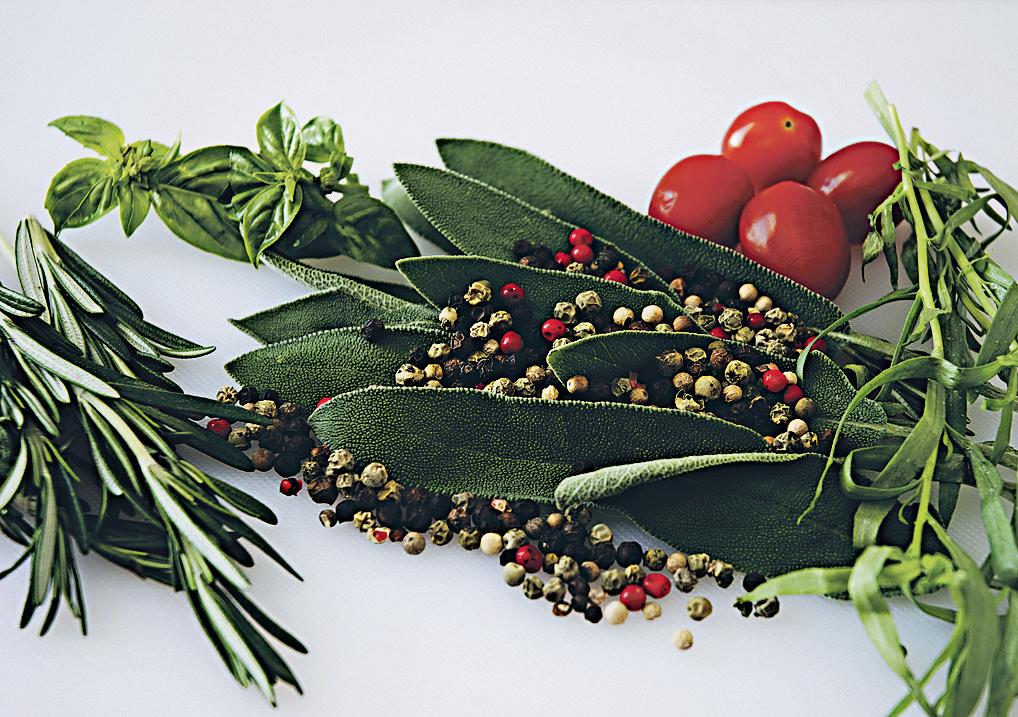
and gained a huge fan following for DM’s amazing voice.
of DM’s performance and did not shy at communicating their appreciation. It was impossible not to give in to the peppy beats of his hits. The most sedate amongst us were also tempted to shake a leg or two with the badshah of bhangra


The concert commenced with the prayer Namoh Namoh from his album Raula
As a performer DM was enormously appealing, especially when he broke into his very own style of bhangra. As a singer his voice was faultless with music to match, however there were murmurs of disappointment at the lack of glamour and glitz that fans have come to associate with Daler Mehndi. Unlike his videos, there were no glamorous dancers nor glitzy props or backdrops. Given the considerable price tag and DM’s reputation as Mr. Colorful (he has bought Sikhs a whole palette of colors), the lack of oomph was noticeable.

The positives, however, far outweighed the negatives and the DM concert could definitely be termed as a super hit like the singer. His songs, though mainly Punjabi in language and rhythm, manage to surpass cultural barriers and provide quality entertainment to people across the globe, and Melbourne was no exception.

drive around a car park three times so that i don’t miss even a minute of the heated debates that Jon sometimes engages in with his interviewees. Driving to work is incomplete for me, without Faine-ovision. Listening to Jon is akin to having Weetbix for breakfast every morning, full of information that is good for you, but not necessarily popular with everyone. Those who grow up with it love it, for others it is an acquired taste.
So when the opportunity arose to attend a
MeLBoURne KannaDa Sangha recently held a musical concert featuring Smt Sangeetha Katti, which combined as a tribute to the late Dr Martand Joshi, renowned academic and member of the community who passed away in June this year.
a huge crowd was present at the concert to honour Dr Joshi’s memory and enjoy the talent of Smt Sangeetha Katti. Srinivasa Sharma and Bhavya Vinay welcomed the audience and guests in their role as the masters of ceremony.
The event began by lighting of the traditional lamp by chief guests Smt Sangeetha Katti, Ravi Bhatia, Dr anavekar and Uma Malipatil. This was followed by an invocation song rendered by amrutha nandi. Uma Malipatil welcomed Smt Sangeetha Katti and other guests, and Ravi Shankar introduced Ravi Bhatia, chief guest for the function. Mr Bhatia is the Managing Director of Primus australia, and he shared his memories of Dr Joshi, as
My Story lunch with Jon Faine at the RaCV club, yours truly was there, autograph book et al. as i settled on my table as close as possible to Jon’s, i noticed that i was the only under 40 and brown person there, other than the club staff. The RaCV club dining room was packed with members and guests all wanting to hear from the wizard of words. it wasn’t likely that Jon and i would get a chance to engage in an intimate confab.
To put things into a bit of perspective let me tell you that in my line of work as a journo i meet plenty of interesting people, celebrities, stars and hoi polloi; however i rarely whisk out an autograph book or get starry eyed with any of them. This however was an exception, i even queued up to talk to Faine, something i never thought i’d ever do. To cut a long gushing story short, meeting Jon Faine was worth making any exceptions to self-imposed rules.
Jon Faine is an articulate, well informed, meticulously prepared and witty radio presenter. after seven years as a lawyer, Jon entered radio broadcasting in 1989 to produce and present Radio national’s Law Report. He then presented 3Lo’s Morning and afternoon programs, worked on aBC TV’s Investigators, First Edition and Wise UP and has been presenting the morning
program on 774 aBC Melbourne since 1997. From 1997 he has hosted aBC’s local radio morning program from 8.30 am to 12.00 pm in Melbourne, including the Conversation Hour which is heard across Victoria from 11.00 am.

Jon was at the RaCV club to talk about his yet-to-be-released publication about a road trip from Melbourne to London with his young son, Jack. Jon took six months of service leave and his son took a gap year in 2008 to fulfill a cherished dream of navigating by road across several continents. The father and son team drove across Malaysia, China, Turkey, Franceand ended their adventure at London’s Piccadilly Circus for new Year’s eve.
With characteristic candour, Jon shared his memorable journey and experiences with a rapt audience. Meandering through the Silk Road or the highways in Uzbekistan, getting a tankful of diesel in iran for the price of one litre in France, meeting an australian aid worker in the remotest corner of Mongolia, getting lost several times in harsh terrain, Jon talked about his adventure and answered questions posed by guests. Judging by his captivating talk, Jack and Jon’s journey will make a compelling read.
Says Jon, “it was a remarkable journey
but my lasting memories will be not of the fake antiques, the scenic spots and the museums, but always the people we met and the friends we tried to make as we went through their towns. not once did we feel scared, not once did anyone make us other than totally welcome. So a final message? The world is noT a scary place - get out there and have a look around!”
Look around i surely will - for Jon’s bookwhen it releases sometime this year.
Jon, who is known for his ability and willingness to ask the stickiest of questions, was noncommittal while answering mine. i asked him about his views on the indian student issue and whether he thought allegations of racism in australia were justified. “If the Indian community and students feel there is an issue then they have the right to voice their angst,” he said.
Jon has aired conversations with Gautam Gupta from the Federation of indian Student’s association, former student Yogesh Malhotra and Vasan Srinivasan of Federation of indian associations of Victoria in relation to this issue last month. He has also raised the issue with local ministers, police and relevant authorities.
anyone who has observed Jon’s rather brilliant career as a top radio presenter would agree his interviews are thought provoking, his comments interesting and his speech inspirational. Will his book prove to be a master seller on all those counts? We hope to find out soon.
well as highlighting his accomplishments, activities and his dedication in building up Kannada Sangha.

Mrs. Kokila naidu talked aobut Dr Joshi, whom she knew from his early days in Melbourne. Mrs. Zofia Joshi then gave an emotional speech about her late husband’s aspirations and love for the Kannada community. Dr Joshi’s life history was highlighted throughout the tribute ceremony by the speakers.
The second half of the concert was a musical delight with renowned singer Smt Sangeetha Katti in her element. Chandra Bangalore introduced Smt Sangeetha as one of the leading Hindustani classical vocalist amongst the young brigade of artists from india.
She enthralled music lovers with a balanced mix of Hindustani, bhava geetha and sugama sangeetha. She also sang
We are a professional Indian family with 2 kids (7 years and 5 years). We require a suitable single or married lady (couple) to provide live-in childcare in our house and do light housework. In return we will be offering the following facilities to the lady / married couple:
• Free furnished accommodation (bedroom) in our luxurious house with attached private toilet / shower / washbasin / walk-in-robe / TV and DVD
• Free electricity / gas / water
• Free food
• Share use of kitchen, fridge, washing machine, etc
• Nominal salary
• House is close to park, shopping centre, bus stop
If interested, call on: 0421 284 802

ended the concert with the patriotic song Vande Mataram
Mementos were presented to the guests by Ravi Bhatia and Uma Malipatil. The
concert concluded with a vote of thanks by Srilakshmi ajjampura. The concert was a great success and enjoyed by guests and members alike.
As a young schoolgirl in the ‘70s, when Indira Somani would reveal her Indian origins, fellow students would confuse her for a native American.


“No one knew where India was,” she says in her first film, documentary that uncovers several issues around the early Indian diaspora through
Somani’s own personal story.
The film, co produced by Somani and Leena Jayaswal, was screened recently in Sydney by PriceWaterHouseCoopers and TiE, followed by a Q&A with Somani.
For new immigrants like myself, coming from a confident “new” India, it is close to impossible to imagine the world in which
EVEry MIgrANT has a story to tell. Migrant sensibility and diasporic experience is now an industry that has spawned many writers, authors and film-makers. Stories of Indians adrift - abroad, assimilation, nostalgia, survival have been told several times over. However every once in a while a storyteller comes along who has something simple to say that can affect people deeply. Indira Somani’s 30 minute documentary Crossing Lines is one such poignant and thoughtprovoking tale that strikes a chord, especially with second generation Indians.
The South Asian Journalist’s Association of Australia (SAJAA) hosted the screening of this documentary at Eureka Towers recently. Members and guests of SAJAA shared Indira Somani’s journey back to India after the loss of her father, and her attempts to stay connected to the Indian culture and extended family. The modest first-hand account of Indira’s experience of being Indian in America and Indian American in India provides an insider’s view from without and the outsider’s view from within. The two roles overlap, blend, contradict, negotiate and make good viewing.
Crossing Lines was co-written, co-produced
times monotonous married life; and going through some old photographs with her father’s sister, who can’t speak Somani’s language, but brings her to tears with her
Though this is Somani’s first film, she has ten years of broadcast journalism experience as a producer and is also currently an Assistant Professor with the Department of Journalism, Washington
She has also been undertaking academic studies of Indians who have migrated to the US. Her latest research studied the impact of satellite television on the Asian Indian community in the States, specifically the Washington Metro Area. This study also included a historical overview of the various kinds of media Asian Indians used over 40 years in the US, from 1960 to 2000. “A study has


shown that in the US, the VHS was used most by ethnic groups,” said Somani, commenting on how the community kept in touch with what went on back home in India through pre-recorded videos at a time when technology had not yet made

During her three-week stint in Australia, Indira was completing the same study, with the Indian Australian diaspora as
and co-directed with photographer and film maker Leena Jayswal. Leena is an Associate Professor in the School of Communication at American University in Washington DC. Indira is an Assistant Professor of Journalism and Mass Communications with Washington and Lee University. Their award-winning film was screened in several film festivals across US. It was picked up for public television by NETA (National Educational Telecommunications Association) and distributed to nearly 100 PBS stations, which will continue over the next three years.
The screening in Melbourne was followed by a discussion with Indira Somani on her film and the socio-cultural issues faced by immigrants across the globe. Indira was in Melbourne to speak at a conference in Melbourne University on the effect of satellite television on the Asian Indian community. The Q&A that followed led to
further exploration into the psyche of the film maker and journalist. She demonstrated a good understanding of issues that face immigrants as they reconcile between their homeland and adopted land.
The SAJAA event was sponsored by Anil Sharma from India at Melbourne Hindi Newspaper. SAJAA is the first organization of its kind in Melbourne that represents and unites ethnic media from South Asian backgrounds. SAJAA’s aim is to create a
platform for representatives of ethnic media to engage in meaningful dialogue and find ways and means to create a collective impact.
The screening room in Melbourne’s iconic Eureka Towers was abuzz with deliberation as the audience related to the film at various levels. SAJAA President Neeraj Nanda (South Asia Times), Manpreet Kaur (SBS Radio), Tony Sethi (G’day India), Mrs. Manjeet Sethi, rahat Kapoor, Dinesh Malhotra (Bharat Times), Anil Sharma (India At Melbourne), gautam gupta (FISA), guruswamy and his wife Kokila, Muktesh Chibber, Madhu Das and Pratima Francis were among those present .At the conclusion of the event, Secretary and Public Officer of SAJAA Preeti Jabbal (Indian Link) thanked all the members and guests for their ongoing support to SAJAA.
 Simmi Bakshi
Simmi Bakshi
At the end of the screening in Sydney, I felt like I almost heard a collective sigh – the sense of a combined humanity, that we all feel the same things and have gone through similar phases in our own lives.Indrani Somani (and right, with co-producer Leena Jayaswal) Scenes from the film Crossing Lines
Fiji indian Senior Citizens association recently celebrated with fanfare its tenth anniversary. The Bayswater Primary School hall, adequately heated to counter the 8-degree chill at the foothill of the dandenongs, was imaginatively decorated with balloons, colourful saris stretched fulllength on walls, others individually tied in styles from various indian states. at the venue early, we were pleased to see that, repudiating compulsive indian cultural binding of arriving late, the hall was already full with ladies in colourful saris and loads of gold, and tastefully attired gentlemen. in occasion-congruous jodhpuri, President Liladhar jeraj, affectionately jerry, personally welcomed arrivals, indicating the commemorative colour souvenir was for sale.
The hundred-odd members tucked into dinner of chicken curry, daal, vegetables, rice and hot puris. Satpal, playing Panjabi dhol and dramatically marching through the hall to our delight and applause was indication dinner was over.
Honouring late Shri M. B. N. Newaj, first FiSCa president, jerry initiated a minute’s silence. He then welcomed Chief Guest Knox City Mayor Cr. david Cooper, Ms. Elizabeth drozd (representing Victorian Multicultural Commision since Chairman George Lekakis was engaged elsewhere), Mr. Kamal Kishore (President, Hindu Satsang), dr. abhay awasthi (President, Hindu Foundation) and Ms. Marjorie Lapworth who assisted late Mr. Sheonath found FiSCa in 1999.
He started off by saying that ‘senior’ was a term he learnt of only after moving to australia, as back home in Fiji, grey-haired people were all referred to as ‘buddha’. How lucky to become a senior in australia, expatiated jerry, where seniors enjoy
THE FEdERaTion of indian associations
Victoria recently invited members of the community to a meeting at the University College hall, Melbourne University, where newly elected FiaV President Vasan Srinivasan welcomed the invitees. one extraordinary facet that hit eyes, was FIAV's first June 2009 edition newsletter, replete with relevant information about endeavours FiaV continues to work towards.
Whispers that Vasan, as friendly President Srinivasan likes being called, is heading all nine yards to transform FiaV into near Utopia, was music to our indian ears.
Speaking on the occasion, Vasan stated that since winning the Liberal Party preselection for the 2002 Federal elections, he had travelled all over the state to meet communities including indian, and gathered that “early indian arrivals laid a red carpet for those arriving late”, a fact that escapes most indian intellects. He also spoke of his dream of a community hall where indian culture and values would be depicted: three hectares to accommodate 300 pax, consisting of community kitchens, restaurants, swimming pool, cricket ground, tennis courts, community training centre, four meeting rooms for 55 to 100, as well as a 50-60 bed seniors’ home. His envisioned endeavours to “facilitate and promote increased/sustained access to linguistically and culturally adverse pockets of indians”, significant aged care needs in mind through information and service provision, though a big ask, is worth exploring. Vasan also pledged free coaches for seniors' excursions once in the beginning and at the end of each year, as well as independence day luncheon
Multicultural Commissioner Ms. Elizabeth drozd praised FiSCa endeavours toward community development. “Ten years is a commendable feat”, she remarked.
The conspicuous absence of mithai with dinner was sorted out as a large, creamy cake was rolled in over a trolley, which Cr. Cooper, Ms. drozd and jerry joined hands to cut. Cake trolley-ed away, token Thank You gifts were given to Cr. Cooper, Mrs Cooper and Ms. drozd. as Mr. Ram Kumar recited a Hindi poem highlighting FiSCa attributes, cake and sooji halwa were served individually.
By way of entertainment, we had two young Bharatanatyam dancers, a Krishna bhajan led by jerry himself, a series of Bollywood dances, an episode from the Ramayana, and bhangra.
concessional travel, Seniors’ Card, carers to cater to needs, etc. There was however, some cause for concern, noted jerry: seniors are the fastest growing population in the world, and economies like the USa will struggle to support seniors in just forty years.
Recommending that since Mayor Cooper honeymooned in Fiji he may consider renewing vows in Fiji, jerry invited him to address the membership.
in his speech, Mayor Cooper noted that Knox boasts the largest indian population in Victoria, as well as a larger diversity of cultures: 1,50,000, residents speak 54 languages, he cited, to our applauded pleasure. (Cr. Cooper has instituted the Knox Mulcitultural advisory Committee). Signifying that relations between elected
representatives and residents must be maintained, he insisted that proactive attitudes inculcate harmony.
a Richmond Football Club supporter, Cr. Cooper’s dreams entail tram line to Knox Shopping Centre, and Mathew Richardson sculpted in bronze at Knox.
“From south India to the south Pacific that is Fiji”. jerry and friends, garlands around necks, chanting mantras in Fijian lingo squatted on the floor, and initiated the Yagona ceremony: a Ratu (Chief) welcoming another into his territory, as hallowed Yagona drink was poured into a wooden bowl in the middle. Mr. d. S. naidu posing as Chief, they relished Yagona served in coconut shell cups, declining which is sacrilegious. Yagona, to me, was bitter tasting, no disrespect, and cloudy.
Mr. Ram Vilash called the raffle of gifts donated by Mrs. Veena Singh and Mrs. naidu. at the end, ladies and gentlemen gathered together to sing isa Lei, Farewell in Fiji dialect, soothing, charming, tune angli-inspired, most Fijians joining in the nostalgia, printed copies of the translation in English distributed.

The cover heavy and glossy, the commemorative brochure carried a typically Fijian scene in colour; palm tree and rising sun over the Pacific. It contained necessary FISCA history and that of its office bearers past and present in photographs.
The hall was decorated by Mrs. Kamla jeraj and Mrs. Satwati nath. Hats off to President jeraj and his team of dedicated expats for an entertaining evening indeed.
George Thakurand diwali dinner for seniors, complete with Belly dancers and (on the lighter side) an ambulance outside. Vasan also proposed an indian opportunity Shop in Camberwell, oakleigh, or some other central Melbourne location.
dr. devki Monani spoke next. Through a power-point projection, she presented a well-researched/documented Community Partners Program she had chalked, to upgrade information and service provision for the community. She seemed sincere when she said that two days a week with F
chalked out to advantage only them. He began by reminding dr. Monani the topic for the day’s meet: Why Elderly indians do not Choose To Use Mainstream Services, which she had neglected to intimate.
Thanking President Srinivasan, Mr. Sushil Sharma and dr. Monani for their efforts dr. Phakey, “neither a social worker nor psychiatrist, his thoughts a collection 's achievements and endeavours. Wishing an r. Phakey stated that the absence of competition amongst associations may help make this
association, detailed a GP's viewpoint of optimum service realisation from government departments, such as dental care, helpers to provide company when at home alone Monday-Friday, podiatry, how to obtain free scooter if disabled, and many other freely offered services which indians
towards optimising programs.
F
accommodated intermediary questions and clarifications that at times appeared superfluous and interruptive. Regretting insufficient community input since not many attend community meetings such as the one at hand, she suggested that if associations would combine resources FiaV would have a more vital case for augmented grants.


dr. Prem Phakey, President indian SCa, presented another well researched/ documented program on the community disinterest in programs painstakingly
gnorance of existing associations, cumbersome accessibility, travel time restraints, or just reluctance/ indifference, he detailed, were some ndians from availing of community programs. He deplored some associations that meet but twice per year. Community newspapers are more revenue inclined than community service, he noted. iSCa, Kingston iSCa, and northern Region iSa the largest, he wished may combine resources to encourage members bringing more members in, etc.
dr. arun desai, from the largest Gujarati
Tea, coffee, cup cakes aplenty, indian lunch - regrettably - lacked authenticity.
George ThakurThe spaTe of attacks on Indian international students and the resulting media and community furore has exposed complex problems of students studying internationally in australia. These arise out of issues like inadequate or inappropriate counselling on the part of some education agents, uninformed and unrealistic expectations of students about studying and living in australia, poor quality education experiences provided by some education providers, and other issues like accommodation, transport and employment opportunities. another factor is inadequate efforts on the part of stakeholders to ensure social inclusion of international students into mainstream australian society.
Two stakeholders that were immediately blamed in a generalised fashion were education agents (both onshore and offshore) and vocational sector private providers. To address the above and as a part of multi-pronged measures to address these issues, a meeting was organised by education access australia (Melbourne Institute of Tourism and hospitality, Melbourne Institute of engineering), a private provider between a visiting delegation of the association of australian education Representatives in India (aaeRI), and a group of top private VeT providers in Victoria. some of the providers who attended were academia International, Cambridge International College, education access australia, Meridian International hotel schoolMelbourne Campus and sheila Baxter Training Centre.
Relevant findings of the AAERI delegation’s various meetings during their
Classical vocal concert
9 August, 4pm onwards at : Waverley Meadows primary school, 11 Columbia Drive, Wheelers hill, Vic, Melway Ref: 71 G 11. Classical vocal by internationally reputed artist Gulam abbas Khan of Delhi, son of padmashri Ustad Ghulam sadiq Khan. Will be accompanied by afroz Koya on tabla. Organised by association for India’s Development (aID) and sharda Kala Kendra. Tickets: $15 onwards. all proceeds will go to aID. www.sharda.org
Consul General
Flag Hoisting ceremony
15 August, 10am onwards at No. 214, Kooyong Road, Toorak. Flag hoisting ceremony to celebrate India’s Independence Day at the residence of the Consul General Of India. all Indians and persons of Indian origin welcome to attend. Call 93831052; Fax: 93841609 or email: cgo@cgimelb.org
Flag Hoisting Ceremony
15 August, 9.45 – 11am at Victoria square, Opp Town hall, sturt street, Ballarat. Indian National Flag hoisting Ceremony to celebrate India’s Independence Day. Organised by Ballarat Indian association Inc, followed by morning tea at saffron Café. RsVp by august 13: Khushi: 0411 237 363;
australia visit were conveyed to the private providers during this meeting on July 25. as part of this visit, the aaeRI delegation met with relevant government departments like the Indian high Commissions to australia, Consul General of India in Melbourne, and associations like the australian Council for private education and Training (aCpeT), as well as several universities, TaFes and private providers. prior to his australia visit, the president of aaeRI had also met with the Minister for Immigration and Citizenship, senator Chris evans in New Delhi, and provided some key inputs towards working out solutions.
The AAERI delegation appeared satisfied with the level of interest shown by all these bodies and government departments in working towards solutions. however, they have recognised a need to better educate some of these organisations about the australian international education sector. aaeRI felt their knowledge should go beyond economic statistics and implications about education being the
third largest export industry in australia, and move towards a deeper understanding of the main focus of this industry – the international student. It is very important to improve international students’ australian experience, if the country has to retain its place in the highly competitive international education market. aaeRI sought the cooperation of top private VeT providers in this endeavour of educating relevant bodies.
It is believed that about 38% of Victoria’s international students (about 22,000 students) study with ten top private providers in the state. These providers will be key players, along with aaeRI and similar quality agent organisations from other countries, in bringing about a positive change in the vocational education sector and in the overall international education sector in Victoria. This will be achieved through benchmarking a high standard of operation for providers and education agents.
Both aaeRI and the top providers agreed
khushi@ncable.net.au
Lalita: 0437 753 330; nitai93@yahoo. com.sg

15 August, 6:30 for 7pm start at Richmond Town hall, Bridge Road, Richmond
3 course meal & drinks (BYO). Tickets $60 members, $65 non-members For any further information please contact Dr. Gurdip aurora Tel: 0417 357715
Mehfil Night
21 August, 8 – 10pm, at The Meeting Room at Coburg Library, Crn Victoria & Louisa streets. Melway: 29h1. presenting Dr shardha Reddy who will sing ghazals and filmi songs, accompanied by tabla and harmonium. Free entry.
VSA’s 21st Dinner Dance 2009
26 August, at Golden sands Receptions, Burwood. Live performances, bhangra tunes, dholis. Tickets: adults $65 (inclusive of pre-dinner drinks, 3 course Indian Dinner and drinks - softs/beer/ wine/sparkling), students (15-17 years) - $55, Kids (12-15 years) - $40. Contact
sarin at social.director@victoriansikhs. com or email – info@victoriansikhs.com / secretary@victoriansikhs.com .
ISCF Independence Day event
29 August, 2 – 4pm at Community Centre, shirdi sai sansthan, 32,halley ave. Camberwell Vic.3124(Melway 60 B5). Indian senior Citizens Forum celebrates Independence Day and Raksha Bandhan. Free event, light refreshment will be served. Contact seema 9551
in this meeting that there is a need for better regulation of operations of a few onshore education agents, who have allegedly followed unethical practices and mislead students about study options and student visa regulations. such activities on their part aid and abet students’ noncompliance with their student visa rules and lead to problems in their academic and social lives, making them easy and vulnerable targets to opportunistic crime, exploitation and an unsavoury experience of life in australia.
aaeRI has noted that recent negative media publicity about the attacks on Indian students and the operations of ‘rogue’ private providers and education agents, has caused a lot of damage to “Brand australia”. aaeRI will be making efforts to project true and positive stories about current students and alumni of australian institutions, and about the desirability of australia as a study destination.
The delegation strongly urged the providers to also conduct a similar exercise of publicising their laudable efforts and highlighting the positive experiences of their students in countries where the australian image has suffered. such media efforts will go a long way in restoring confidence in current and prospective students and their families, about the australian international education sector.

In conclusion, it was decided unanimously that providers and aaeRI will work together towards this goal of improving the australian image, not only in India but also globally.
1067; patel 9572 4960; auplish 9561 1878 or email auplishsk@yahoo.com.au
Shri Sankat Mochan Mahotsava 2009
29 August, 3.30 to 8.30pm at CCTC auditorium, 44-60 Jacksons Rd, Mulgrave, (Mel way Ref: 80K3). puja and path recitation followed by prasad. For more details contact sunila shrivastava, Mobile: 0412 753 763 email: ashriv@ gmail.com

Over the last couple of decades, our lives have become very fast paced. technology along with competitive and cut-throat work ethics have resulted in people being thrown out of balance and experiencing a lot of stress. A strong need is now being felt to de-stress, calm our minds, rejuvenate our bodies and maintain a healthy lifestyle. And yoga, which is a scientific system of physical and mental practices that originated in India more than three thousand years ago, can assist us to reach that desired state of balance and health, and improve the quality of our lives.
vasudeva Kriya Yoga Centre held a two day seminar called Regenerate, Rejuvenate and Rehabilitate on August 1 and 2 at the Shirdi Sai Sansthan at Camberwell, victoria. Its objectives were to raise awareness of yoga in the community and to build harmony amongst different yoga groups and schools.
Nine speakers from different yoga and natural health schools in Melbourne represented their experiences and research findings. Talks, demonstrations and practical practice were offered to highlight the importance of yoga and naturopathy in our daily life for optimum health.
the seminar was inaugurated with the traditional lighting of the lamp and chanting of shlokas. Shri rajendra, yoga teacher and founder of the vasudeva Kriya Yoga School presented a brief outline of the objectives and the framework of the seminar.

the “World Society For Clinical Yoga”, presently teacher and tutor at the Monash Medical School). his presentation, called Science of Meditation stated that yoga is a process of which the core is mindfulness. this can be achieved through meditation which, according to him, is mental discipline. he also spoke about the impact of daily work stress on the body and how we could alleviate this through Pranayama (breathing techniques) and meditation.
undirected practice.
an equally broad spectrum of thoughts and research on yoga. the inaugural speaker, Shri Chris Dale (Yoga Teacher and Therapist for Art of Living School) spoke on Breath - a gateway to health, happiness and spiritual unfolding. the Art of Living, according to him offers a very simple technology to remain happy and help others achieve this. It teaches effective techniques for releasing stress and improving health and increasing energy, peace, self-knowledge, awareness and joy by harmonizing the body, mind and spirit. he also mentioned that his holiness Sri Sri ravi Shankarji would be in Melbourne from December 4 to 8, 2009.
The introductory speaker on the first day was
Shri Swami Samnyasanandathis was followed by a discourse by Shri Bala ratnam (Yoga therapist and founder of vibration Breath therapy). he spoke on Chakra Meditation for healing and provided demonstrations on vibrational Breath therapy (vBt) - a complete programme of the particular practices, ratios, rhythms and combinations of yoga practices which
The final speaker of the day was Dr. Arthur Vassiliou (Doctor of Traditional Chinese Medicine and student of yoga) who spoke about health, longevity and self healing with traditional Chinese Medicine (TCM). Dr Vassiliou elaborated on the holistic nature of tCM which views a person as an energy system in which the body and mind are unified, and each influences and balances the other. The World health Organisation has recognized acupuncture as a successful treatment of 80 different medical conditions. tCM has also offered energy enhancement exercises such as the tai Chi Movement. he also added that tCM is totally safe and has no side effects.
On the second day, the seminar covered
Gita (senior yoga instructor at Yoga In Daily Life) gave a presentation on Asanas, and Acharya Swami Atmamuktanada (Acharya at Satyananda Ashram, Daylesford, victoria) spoke about equal Balance in worldly and spiritual Life. Dr Satish Kumar and Dr Raj Koturu (practicing ayurveda and homeopathic doctors and founders of Aura health Concepts) elaborated on the Basics in Ayurveda and homeopathic medicine. Shri rajendra (Yoga teacher and founder of vasudeva Kriya Yoga School) shared his thoughts and experiences in the valedictory presentation. he spoke in detail about Asana and Upasana. the seminar was informative, enlightening and relevant to current times. It was very well-attended by people from all walks of life, and highly successful in achieving its purpose.
Gayathri SrinivaSan’S Arangetram was held at the alexander theatre at Monash University in July. She is Dr Chandrabhanu - and Bharatalaya’s – 108th Arangetram, which, as was pointed out, is a significant and auspicious number in Hindu cosmology.
From the moment Gayathri came on stage, she lighted up the dais with her smile and her presence, and it was obvious to all that she was thoroughly enjoying every moment of her performance. She danced with poise and confidence - like a veteran of the dance circuit - regaling the audience
of that school, presented a flawless solo recital.
Ramya began with the invocatory Pushpanjali followed by a dance devoted to Lord Ganesha in Naatai with confidence, and did not put one step wrong. the Madurai-Muralidaran choreographed Maruti Kavuthuvam in the first half of the evening was a delightful item which allowed Ramya to portray Hanuman –often a role which tests the mettle of even accomplished dancers. This was followed by a not-so-common varnam in Latangi in praise of Lord Shiva. The padams and keertanas that brought up the second half of the programme were all executed well, culminating in the lively Brindavani tillana, all choreographed by Smt Rajendran. Smt Radha Badri from Chennai provided charming vocal support; Smt Narmatha Ravichandhira’s violin and Ramani Thiagarajan’s flute, with Sri Ravichandhira’s mrudangam made up a lively orchestra. •
The Nadanalaya school performed a series of Krishna’s leelas - all based on the compositions of the great 20th century Tamil poet Subramania Bharati. In it, Krishna was depicted as an adorable baby, a boy playing childish pranks, a youth and a cowherd – as well as the Supreme God of the Bhagawad Gita. The choreography and presentation were imaginative and

relief to providing education for blind, tribal and underprivileged people; from promoting the study of Vedas to other scriptures. Its pontiff, Sri Sri Chinna Jeeyar Swami has inspired thousands of people over the years to build an organisation that works for the community at many levels. On June 21, Jet australia’s Melbourne chapter organized a gala Indian entertainment and dinner in order to raise funds for charities –primarily in Australia.
with her command of the three “n”s: nritta, nritya and natya.
The items were well thought out and represented a broad spectrum of themes: from the navasandhi kavuthuvam to the jatiswarm, padam and tillana. By far the most demanding and longest item was the Swati Tirunal kriti “Bhavayami” in Ragamalika that she presented instead of a varnam as per tradition. It was indeed arranged like a varnam, with jatis and teermanams interwoven into the composition. In it Gayathri brought to life the whole Ramayana playing the character of Rama one moment, Sita the next, and Hanuman yet another. Her story telling skills and abhinaya were of the highest order.
In Bharata Natyam, connoisseurs look for ‘azhuttam’ in a dancer: they are the razor sharp movements of the limbs and the precision and speed of the adavus. Gayathri is one of a minority of dancers in Melbourne who displays that azhuttam in good measure.
Gayathri was fortunate to have Vijay Prakash, a cousin, lending vocal support for the event. Vijay Prakash is a rising star in Bollywood and is a much sought after singer in the tinsel city after the success of his music in Cheeni Kum and Slumdog Millionnaire – having been one of the voices behind the hit song Jai Ho!
Dr Chandrabhanu was supported on the Nattuvangam by Ambika Docherty and Veshnu, and Sri Balasri Rasiah’s mrudangam was spot on. Sri Murali Kumar on violin and Sri R Thiagarajan on the flute contributed to an enjoyable musical orchestra. •

raMya CUMaraSaMy’S Arangetram was held on 27 June at the George Wood Performing Arts Centre. She is a student of Smt Shanthy Rajendran’s Nrithakshetra School of dance, and in the true tradition
nanDini naGaSUnDaraM’S solo bharatanatyam performance was held at the renaissance Centre. She had begun learning from the eminent guru Smt Tejashree Adige in Pune from a young age, and on her arrival in Melbourne, continued her training under Smt Shanthy Rajendran of Nrithakshetra, moving on later to Smt Radhika Suresh Mahadeva, [a disciple of the illustrious Dhananjayans of Chennai] under whose tutelage she had her arangetram in 2006, in Chennai. having spent most of 2008 in India, and learning dance from the doyen of bharatanatyam – the legendary composer, choreographer and dancer Professor C V Chandrasekar, nandini and her parents wished to present to the Melbourne audience the fruits of the advanced training she had received under that eminent guru.
Most of the items that Nandini presented that evening were, therefore, choreographed by Prof Chandrasekar himself, and several of the musical pieces for the dances were also composed by him. Moreover, he had lent his voice for the recorded music for the evening, - not to mention the nattuvangam and solkettu.
nandini began with a Pushpanjali, followed by a sabdam composed in ragamalika by Prof CVC. The varnam in danyasi on Lord Krishna was a traditional kalakshetra item which she performed flawlessly. Her adavus were polished, graceful and crisp, and bore the hallmarks of her great guru. In every piece, her hard work and the intensive training she must have undergone were evident. having watched Nandini perform in 2006 in Chennai, it was obvious to this reviewer that she had matured as a dancer, and displayed the self-possession, confidence, grace and poise of a professional.
SAlAngAi in Sangamam was a dance presentation by three bharatanatyam schools in Melbourne: Shanthy Rajendran’s Nrithakshetra school, Narmatha Ravichandira’s Bharata Choodamani school and Meena Elankumaran’s Nadanalaya School.

evocative, and the audience able to follow and enjoy the episodes from Lord Krishna’s life.
Bharata Choodamani school took up the theme of Dasavatara - depicting the 10 avatars of Vishnu in a complex ragamalika presentation - which had been choreographed by the well known Bharatanatyam guru Sri Adyar Lakshman, and rhythmic arrangements by Karaikudi Sri Mani and Sri M Rama and Krishna avatars, understandably, received detail treatment at the hands of the choreographer, and the students
When the City of Monash – especially councillor Paul Klisaris – as well the former Mayor Tom Morrissey, saw the stellar work Melbourne, they helped get the Clayton Hall for free, and Mr Tom Morrisey also graced the occasion. that evening, JET presented a cheque of over a thousand dollars each to the epilepsy oundation, the Cancer Council and BestChance Child Family Care Foundation. Over 400 guests attended the event, which included Ms Inga Peulich, State Member for the South Eastern Metropolitan Region and Shadow Secretary for Education and Community. Three visitors from Sydney came specially to be present for the event. A souvenir was also released to mark the occasion, which was followed by a multimedia presentation of the schools and charity work that the organization helps support in india.
The entertainment segment began with a laya Vinyasam or Percussion Ensemble, presented by the students of Sruthilaya Kendra, with a special guest concert by the well known flute maestro Sri
beautifully depicted and enacted various well known episodes from the Ramayana [Sita Swayamvara, Tataka vadam, building of the bridge by the vanara sena to Lanka, and the final battle with Ravana] and Lord Krishna’s life [his infanthood, the Kaliya nardana episode and the lifting of the Govardana mountain].
The senior students of Nrithakshetra presented a very impressive and demanding Mallari, a pancha bhootam and a tillana. Only dancers as accomplished as those from nrithakshetra could make something relatively unexciting like the Pancha bhuta – [the five elements of nature] come alive and make it this beautiful and visually engaging. Choreographed to the music of Madurai Muralidaran, they brought out in dance the 5 elements with a message that stressed the balance between the elements and the need for environmental protection. Their choice of the popular Swati Tirunal tillana in Suddha Danashri was a fitting finale to an evening of superlative dance.
a fLeDGLinG indian organisation – Jeeyar education trust or Jet – has been involved in a range of charities in India from disaster
a skit by the Prajna students, Bollywood dance items and finally, music by the Raga Lahari Music club - all while the guests enjoyed a sumptuous dinner.
•
the annUaL Mummoorthigal Festival was organised by the Academy of Indian Music at the Kel Watson Centre in June this year. The two-day event focuses on the compositions of the three great composers of Carnatic music, Dikshitar, Shyama Shastri and Tyagaraja. Apart from two rare occasions, the festival has been organised by the Academy over the past 20 years entirely through its own effort, without it being subsidised once by the State, Federal or Local Government. Organising something on this scale is no mean feat, and the Academy of Indian Music – and its students – must be congratulated for this marathon effort.
On this occasion, ravichandhira traced the 25 year- development of the Festival in Melbourne and in australia – beginning with the support of Marni Selvendra, Dr Sampath (Canberra) and the migration
Continued on page 20
A leading student recruitment and migration consulting company, requires education consultants for its Melbourne based office. If you have the relevant experience and are eager to join a friendly team offering good remuneration and commission, please forward your resume to
To help Australian businesses, a temporary tax break is available on plant and equipment you need to buy to keep your business running.
The tax break is not a refund, rebate or tax offset. It’s a tax deduction to reduce the assessable income of your business. Deadlines apply.

If you own a small business that turns over less than $2 million a year, you can claim an extra 50% tax deduction on the cost of eligible assets which cost $1,000 or more.
To qualify, the asset must be bought between 13 December 2008 and 31 December 2009 and be installed by 31 December 2010.


Larger businesses may qualify for an extra tax deduction on eligible assets which cost $10,000 or more.

To qualify for the 30% tax deduction, the asset had to have been bought between 13 December 2008 and 30 June 2009. It will need to be installed by 30 June 2010. The 10% tax deduction is available depending on when the asset was bought. It needs to be installed by 31 December 2010.
The tax break covers new, tangible, depreciating assets such as:
n cars, vans, trucks and other business vehicles
n computer hardware (but not software)
n tools
n furniture.
It also covers capital improvements to existing machinery and equipment.
Contact your tax adviser, visit the website www.australia.gov.au/businesstaxbreak or phone the business tax break info line on 1300 337 921.
Continued from page 17
of musicians into Melbourne starting with Smt Vasumathi Subramaniam (Melbourne) and to the large community it is now. All those years ago, it had begun modestly at Dr Selvendra’s residence, gradually becomingwith full audio facilities provided by Charles Walke r- to what it is today.
The array of talents on display by the Carnatic music schools was breath-taking. The most awaited segment of the festival – the rendering of the Pancha ratna kritis of Tyagaraja – by the carnatic musicians of Melbourne, did not disappoint. This is a truly sublime musical experience to be had anywhere in the world, and it is Melbourne’s good fortune that it has so many gifted carnatic musicians who come together once a year in rendering such beautiful music together. For about 5 years, bharatanatyam had been incorporated into the Festival, but due to space and time limitations, it could not be accommodated this year.
Due to the growing interest of resident musicians in the Festival, the artistic director hopes to expand the event even further next year. He observed that good cooperation among the musicians, new initiatives, tolerance and understanding [of the objectives of the Festival and the limitations posed by time and resources] from all the teachers in the music community make this an enjoyable task for him every year.
The special feature concert this year was by the eminent vocalist Sowmya.
•
Laya Vidya’s annual concert
THe AnnuAl concert of the laya Vidya Centre, held at the Chandler Community Centre last month, is a much anticipated event in the Melbourne Indian classical arts calendar. It showcases some of the best in mrudangam, and the melodic component always throws up a few pleasant surprises. This year was no different, and its director Sridhar Chari had a line up of some wonderful musical feasts.
The first section of the concert consisted of ‘laya vinyasam’ - a cascade of vocal percussion and mrudangam set to a melange of talas. The finale of this segment, which reached a crescendo with all the mrudangists playing in unison, was the piece de resistance of the evening, and was a testimony to the rhythmic skills and timing of the students.
In the second segment, Keertanamala, which followed after the intermission, the students of the Centre each had an opportunity to accompany vocalists, veena artistes and flautists.
Chitra Sudarshan




A new literary novel is the talk of the town and it is NOT Aravind Adiga’s Between the Assassinations. Adiga’s Assassinations, which was written before The White Tiger, is a bleak, disturbing narrative. Whereas the protagonist Balram Halwai in TWT is aggressive in his deviousness, BTA seems more resigned in its misery and destitution.
It should be apparent to anyone now that Adiga sees, and wishes to see, nothing but the vile in India. Not that I have a problem with it - God knows there are countless vile things around - however, as I had written before in this very column, novels sometimes say more about their authors than they do about their protagonists: more about the novelists’ psychological make-up than that of their subjects!
Getting back to the latest sensation in Indian Writing in English (IWE), The Toss of a Lemon by the Canadianborn, Arkansas-based author Padma Viswanathan, has taken the literary world by storm, and has been compared to the debut novels of Jhumpa Lahiri and Arundhati


Roy in its scope, depth and elegance. This story - a tome - spans more than 80 years and several generations, of a Tamil Brahmin family. At the novel’s heart is Sivakami, a captivating girl-child married at 10 to an astrologer and village healer who is drawn to her despite his knowing and believing in his own horoscope which predicts his early death - depending on how the stars align when his children are born. All is safe when he and his wife have a daughter, but when their second child, a son named Vairum is born, the child bride Sivakami becomes a widow at 18 - with two young children to look after. On becoming a widow, her head is shaved and she wears a widow’s whites according to the rules of her caste. “From dawn to dusk, she is not allowed to contaminate herself with human touch, not even to comfort her small children.” And she dutifully follows custom, except for one defiant act: she moves into her dead husband’s house and village to raise her children. Her servant, Muchami, a closeted gay man who is bound by a very different set of caste rules, becomes her public face. Their strange and unusual relationship, scrupulously formal in its adherence to social norms, holds three
generations of the family together.
Taking us deep into the lives of this Tamil Brahmin family from the late nineteenth century to the 1960s, Viswanathan also traces the impact wrought by more than half a century of social and political change on their lives. Her novel was inspired from the moment she asked her grandmother: “Tell me about our family’s history.” The tales told by her grandmother became
Walk; Gita Hariharan’s Thousand Faces of Night and others; and Brinda Charry’s The Hottest Day of the Year. However, what Padma Viswanathan does with her subject is considerably more: she is not only a great story teller; her lilting prose and her skilful recreation of a bygone era in rich and intimate detail, (with no moralising or taking sides) brings to life a whole different epoch and culture, profoundly exotic to many. Yet in the final analysis, the family is utterly recognizable to us all: it is the universal theme of a group of related individuals in the midst of momentous social upheaval.
the foundations of Viswanathan’s debut novel, although she also visited India on a research trip and then reinvented the family stories as fiction.

Tales of Tamil Brahmins are not new: some of the earliest IWE, such as RK Narayan’s novels, centre around this sect. In more recent times there have been Anita Rao Badami’s novel Hero’s
In the way Viswanathan writes about Tamil Brahmin life, there is a resonance of Arundhati Roy’s Syrian Christian household in Kerala and Jhumpa Lahiri’s Bengali family in the US and India. This is a riveting yarn whichever way you look at it – and unputdownable in every sense of the term.
Viswanathan studied in the Universities of Alberta, John Hopkins and Arizona, and her short stories have appeared in several publications. She lives in Fayetteville, Arkansas, with her husband, the poet/ translator Geoffrey Brock, and their two children.

CHITRA SUDARSHAN reviews a novel which scans generations, and yet keep the reader captivated through inspired writing
Yet in the final analysis, the family is utterly recognizable to us all: it is the universal theme of a group of related individuals in the midst of momentous social upheaval.

winning third prize. The winning team comprised the ‘youngster’ Manek Irani, Sandeep Chitale, Ajit Rao and Sandeep Padey. Following the game, the President of MAGIC Mr Pavan Cheema presented prizes to the winners. This was accompanied by the birthday cake and a stirring rendition of the happy birthday song.
Ivanhoe Public Golf Course is nestled in the Yarra Valley between the Boulevard at Ivanhoe and the Yarra River. It provides a picturesque 18-hole layout for golfers of all ability and a superb clubhouse to relax in before and after the game.
From humble beginnings (the inaugural tournament had 18 players), MAGIC has grown to include a list of over 65 active participants. The Organising Committee is keen to continue promoting the game of golf and to grow the number of participants of Indian connection in Melbourne.
Public Golf Course.
MAGIC (which stands for Melbourne
Avid Golfers of Indian Connection) was founded in 2005 by a group of keen golfers who wanted to foster camaraderie and mateship amongst golfers in the Indian
golf courses around Melbourne and has received tremendous support from players and sponsors.
This year, as many as 40 keen golfers participated for individual and team honours. This event was particularly special

and aptly named “Rekhy Open”. The standard of golf was very good with 14 players playing to or better than their handicap. Individual honours went to Naush Dinshaw, followed by Gautam Dhingra in 2nd position and Mitul Mehra
The next MAGIC tournament will be held in bushfire affected Marysville and is scheduled for 25th October. Besides golf, families (including children over 10 years of age) can participate in Lawn Bowls and enjoy a variety of Indian food delicacies. This will be a fund-raising event for the Marysville Golf Club, so players, donors and sponsors are encouraged to participate and support this great cause. For enquiries, please contact Ashish Rekhy on magicgolfaus@gmail.com
Anoop SinghAs a firm lover and constant user of Arnica, I always say that if you only use one homoeopathic remedy in your life, please make it this. I believe all handbags and first aid kits should carry it. I have prescribed arnica to hundreds of people over the years for various injuries and traumas.
Arnica is a homoeopathic remedy that is probably the most used and heard of, and is used widely all over the world. Just go into a health food shop or even a chemist and you will find arnica in oral, cream and even spray form - it is undoubtedly the Number 1 Best-selling homoeopathic medicine in the world.
If you are sceptical about homoeopathy, why not try it out for yourself? Millions of people are now convinced of the benefits of homoeopathy after using arnica. The next time you have the misfortune to suffer any of the symptoms below, try arnica and discover the amazing benefits for yourself.
In German, the translation for arnica is very appropriate. It is called ‘Fall Kraut’ or ‘falling herb’, which really illustrates its main action. Bear in mind that although homoeopathy is so widely used in India alongside allopathic medicine in hospitals, medical centres and every street corner, many people do not realise that Germany is the country that homoeopathy actually originates from.
Arnica belongs to the sunflower family, and has been used for centuries to relieve bruises, sore muscles and stiffness. It is best used in the homeopathic form orally or as
a gel or cream. In this form there are no side effects as homoeopathic remedies use minute amounts of the substance and by a process of succussion and potentisation, release its healing properties. The flower or herbal form may cause irritation of the skin or gastric side effects, if imbibed in large amounts.
Uses of arnica
Even though homoeopathic selection of remedies is very specific, I would say arnica is almost an exception to the rule. It is exceptional for injuries, falls and accidents of all sorts. Arnica accelerates healing and reduces pain in all physical injuries.
Bruising
This is a must have for people with children, especially young ones who are forever falling over or bumping themselves. Use arnica and watch lumps and bumps go down and almost disappear before your eyes. The bruising and swelling only happens to a much smaller extent than expected. I have witnessed this myself a number of times.
Bleeding
Arnica is very useful in any bleeding situation, from cuts to nose bleeds. Use
arnica and there is usually a marked slow down in the bleeding.
Aching muscles/ muscle overuse
This happens when a person exercises too much or does gardening, lifting etc. As a result of unexpected stress, the muscles of the affected part are achy or sore. A good strategy is to take arnica when you know there has been an overdose of activity.
Physical shock, trauma
Arnica is especially helpful after the classic shock response that follows an accident or severe emotional upset or trauma.
Head injury
Arnica reduces the risk of complications like concussion following a blow to the head, and reduces pain and swelling.
Eye injury
Great for those black eye situations!
After childbirth
Arnica speeds up the healing of bruised and swollen tissue and will reduce recovery times dramatically. It also reduces the amount of pain killers required. This was one of my first introductions to the magic of homoeopathy. I experienced one birth pre-homoeopathy, and two births
subsequently with arnica as support. The recovery was so much better, despite having deep episiotomies each time.
Exhaustion
Take arnica when sleep is in short supply and you have to keep going. Of course it’s cheating, and you will have to rest later Tour de France cyclists swear by it and so do women in labour. Ideal for when you’ve got to do what you’ve got to do!
Dental work / operations
It is recommended before and after operations and dental work. Due to these procedures the muscles are usually stretched, moved around and cut.
Jet lag
Take arnica for that second wind and you can keep awake long enough to get onto local time. According to a Swiss research study of 204 people with osteoarthritis in the fingers, arnica gel was found to be similar in effect at relieving painful, inflamed and swollen joints as 5% Ibuprofen. That’s a great alternative as some people find they are sensitive to Ibuprofen.
Remember to get effective results you must use Arnica appropriately. The best way to do this is to talk to well qualified homoeopath. The Australian Register of Homoeopaths (AROH) has a listing which is recognised by health funds in Australia. (aroh.com.au) Talk to your homoeopath on how often to repeat dosage and on using the appropriate potency.
Kong. Please email details to bharat@ cssri.ernet.in
A
ustralian citizen, 27, 168cm, Handsome Punjabi Hindu Khatri boy. Masters in Accounting & Finance. Own Business. Well established family in Sydney. Seeking good looking and qualified match. Caste no bar. Please contact: 0401057224 or send details with photo to: matriaussyd@gmail.com
Seeking well qualified match, from good family background, for handsome, well settled Gujarati boy 31, 5’7”. Raised in India, living in Sydney since past 9 years. MBA from Sydney, CPA ongoing. Working with leading FMCG as accountant. Please respond with details and photo email: kdsydney@gmail.com
Seeking well qualified and beautiful girl for a Gujarati Nagar Brahmin boy, 29, 5’10”, Masters in Engineering, permanent resident of Australia. Currently working as a Project Manager in Sydney. Please contact bgtmatri@gmail.com or on 0296327398.
Parents invite matrimonial alliance for their younger of 2 sons. DOB: 23 Oct 1984, B.Com LLB (Hons.), half-way
through CPA, permanent government job (APS 6), handsome, fair, 170 cms, nondrinker, non-smoker, vegetarian. Father doctor in Canberra, elder brother software engineer. Email mpgupta@hotmail.com or mobile: 0419 749 448.
Seeking well qualified match for Hindu boy, 27, 6’ 1”, medium built, talented, smart and handsome. Boy raised in India / Australia. Masters in IT from Sydney University. Currently working as Project Manager in US based MNC earning $90K+. Both parents well educated professionals. Family settled in Sydney. Please respond with details and photo to eskay82@gmail.com
Australian Caucasian male, age 44, business man, financially secure, seeks beautiful, slim, caring Indian / Fiji Indian or Sri Lankan girl. Age open for genuine relationship with a view to marriage. If interested please text 0423 074 109.
alliance invited for Indian origin gentleman, 37 years old,
simple and sensible, born and brought up in Mumbai. Mangalore University degree holder (economics, sociology and literature), and a professional diploma holder. Fluent south and west Indian languages. PR or visitors welcome. Please respond on phone 02 9676 2512 or mobile 0458 678 054
Parent of beautiful Punjabi Khatri girl, 28/5’8”, professionally qualified, working in a multinational company in Sydney, seeks professionally qualified well educated, settled boy. Caste no bar. Please e-mail bio-data and recent photograph to seekmat@gmail.com
Suitable alliance invited for Hindu Punjabi girl, 29 years, 157 cm, fair, smart, talented and beautiful. Very social, sweet natured and religious. Qualified (BCA, MBA ), working as SAP HR consultant with IBM in India. Earning very good per annum package. Very well settled family, brother working as a manager in Hong

Seeking professional match for 28 years/152cm North Indian girl, very fair, very beautiful, excellent job in IT, innocent divorcee. Family well settled in Australia. Please respond with details to eeshkripa@gmail.com
Professional parents, Australian citizens with SriLankan Tamil Hindu Vellala heritage, look for a suitable partner for daughter, B Com & LLB graduate; 26; 5’3”; well mannered and well presented, traditional with modern outlooks; vegetarian; reply sv200704@gmail.com with details.
Parents of Sikh Khatri girl invite alliance for their beautiful, slim daughter, 29 /5’-1”, Australian citizen, never married. Currently working in Sydney as analyst with one of the biggest esteemed banks. Family settled in Sydney. Seeking professional, well-educated match with good family background. Caste no bar. Contact: 0411 513 703 or email: roopan09@yahoo.com
DHINGRA offers an easy solution to aches, pains, muscle stress and related




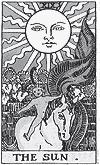

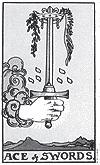
Aries March 21 – April 20
Tarot foresees success and fulfilment for you this month. You are likely to be happy on achieving lasting success. You have the support of people around you. A positive card is drawn for you in a travel reading. The project on your mind currently will ultimately bring you success. Overseas projects are indicated. You should continue to put in hard work in whatever you do.
Taurus
April 21 – May 21

Now is the time to make long-term plans. This is a time for planning future actions. Assessing goals and gearing up to attain the same in times to come is suggested here. Tarot suggests that you should make good use of the present opportunities and seek fulfilment of those you had left unfulfilled earlier. You need to avoid confrontations. The challenge is to remain connected to all the things in life even when the going gets tough.
Gemini May 22 – June 23
There is a focus on development of potential for advancement. You are seen building foundations for future success. There are chances of a new job or development of a new skill. A creative talent could turn into a profitable project. Friendships are likely to be strong. You may be committed to a situation at the present moment which shall reap you rewards in the future. You are likely to take up a course to widen your employment scope.
Cancer June 23 – July 22
You realise that you can no longer stay away from issues – best to face your problems and responsibilities. There is a conflict in the air that may have brought about the worst side of everyone involved. You need to be careful of someone who can create trouble. Avoid arguments or your reputation may be at stake. The end result is not likely to give anyone much happiness. You should be careful taking up only as much responsibility as you can cope with.
Leo July 23 – August 23
Tarot signifies a period of spontaneity. There is a focus on trust and hope. Be prepared for the unexpected. It is a positive time for travel. You are likely to be offered new opportunities leading to new heights. You are likely to feel fulfilled if you undertake this unforeseen journey, trust your judgement while planning for the future. Tarot depicts the journey of selfdiscovery with confidence, fun and optimism. In a relationship reading, you will benefit by living in the present.


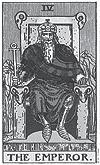
Virgo
August 24 – September 22
Your dreams are trying to convey a message to you. You will be able to find answers to the questions in your mind if you pay heed to your intuition. You need to be careful towards deceit in any form. You should not accept things at their face value as certain things involve deeper issues that might be hidden from your view. In such cases, you should pay attention to the voice of your subconscious mind. In a relationship reading, Tarot sees the need to resolve certain issues.
By Guneeta Dhingra
Libra September 23 – October 23

You need determination and fortitude to succeed. Once you are successful, you shall be respected for your achievements and be the source of inspiration to others. Have faith and confidence in your abilities as you have the inner resources to come out from any situation as a winner. In a relationship reading, it is a positive time as people involved are ready to listen to each other. Communication is the primary factor in the growth of a relationship.
Scorpio
October 24 – November 22
Tarot signifies a deeper commitment to a present relationship and that promises a lot of development in the future. It can even suggest a new relationship opportunity which shall be good and successful. You are required to make certain decisions based on your inner feelings rather than logic; at the same time, guard against temptations. You may have outgrown the current line of work and it would be wise on your part to move on into something new


Sagittarius November 23 – December 21
There is a focus on the realisation of what you desire and your inner strength to achieve the same. Domestic changes are likely to take place. You may find yourself thinking about moving on in life towards a new setting. You desire to explore opportunities for fulfilment. It could be a search for a deeper commitment within your present relationship. It could also mean spending time in meditation or in study.
Capricorn December 22 – January 19
Tarot portrays isolation, a need to think over issues, meditate on the options and energize oneself before acting. You are able to prioritize things and focus on your goals. You contemplate on your future prospects, making use of the time in your hands. You are trying to be at peace with yourself after a long period of turmoil. Time is right for regaining mental and physical health. You may be undergoing a period of ill health and need to recoup your strength.
Aquarius January 20 – February 18
Your focus is likely to be on your achievements and an overall feeling of happiness resulting from it. Tarot signifies success and victory for you. You are nearing your personal goals and an enterprise is coming to a successful conclusion. You are feeling emotionally secure and content, which is due to a job well done. Your inner needs are fulfilled. In a relationship reading, a great deal of harmony is seen as you have learnt to love and care for yourself and so you work towards making a happier relationship.
Pisces February 19 – March 20
‘Make hay while the sun shines’ needs to be your mantra. You are likely to find yourself involved with a person who has no fear of the unknown and readily takes risk. Change is his/her way of life. You are likely to be offered a fleeting opportunity of assistance from a person who is unpredictable and has a quick mind which shall be shortly focused somewhere else. The card for you represents instant action with no time to think over other options.
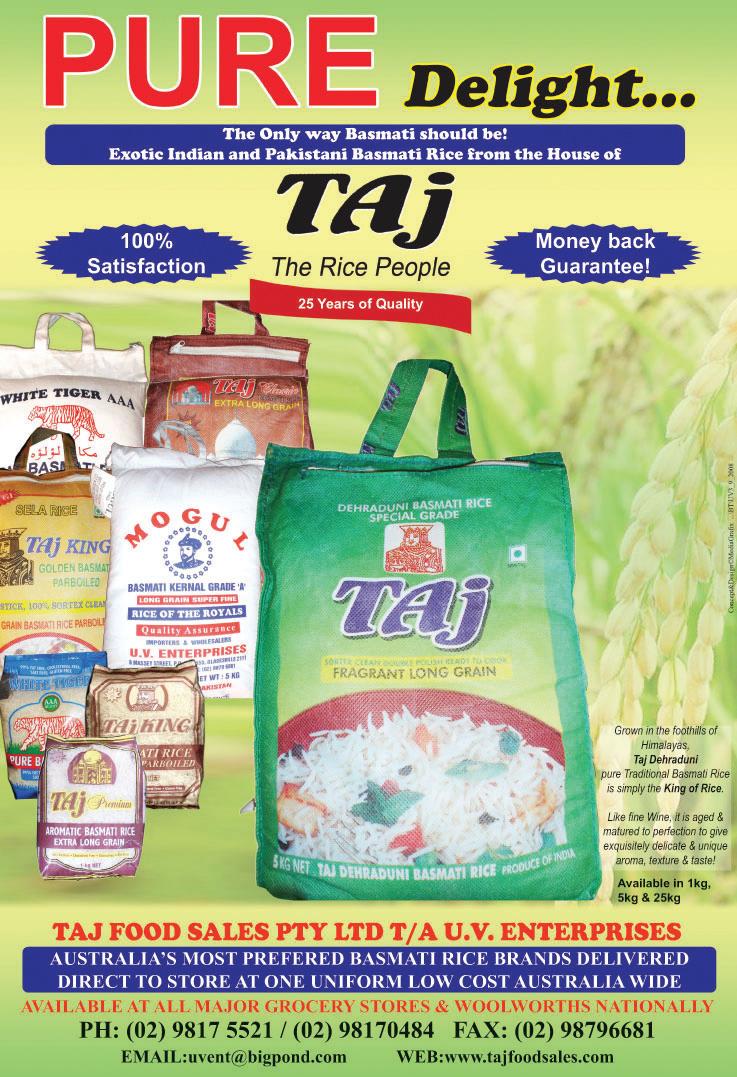

Get
Certificate
Courses also available in Business (HR)

Disability Work
English language
First aid and Food safety programs
Health Support Services
Home and Community care
Lifestyle and Leisure

Quality Training, Flexible Class delivered within easy reach of public transport at both campuses. Call us to enquire about our Dual Certificates and FREE training possibilities under SKILLS FOR VICTORIA and VARIOUS GOVERNMENT FUNDING PROGRAMS

Enrol now to avail a Discount on selected courses* *Discounted seats are limited, available on first come, first serve basis

Email:

Phone:

Website: www.agedcare.net.au







Film: Love Aaj Kal
Cast: Saif Ali Khan, Deepika Padukone, Rishi Kapoor, Rahul Khanna

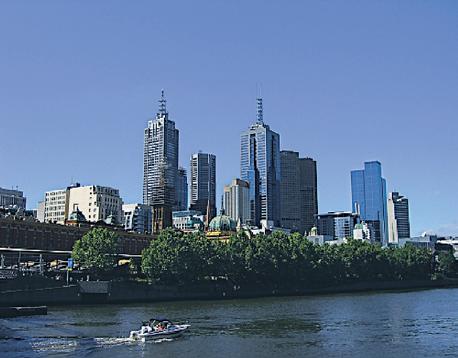
Director: Imtiaz Ali


Midway into the second half of Love


Aaj Kal, Rahul Khanna screams at Deepika Padukone and asks her to make it clear what she actually wants in life. That’s one of the very few moments in the film audiences can really empathise with.
After all, this is what you as a viewer also feel throughout the love story of Saif Ali Khan and Deepika - what do they really want?
They break off, but haven’t quite drifted apart. “After all it’s an era of communication,” says Saif. So much so that even when the ‘once in love and perhaps
still in love’ couple decide to take care of their lives separately rather than getting into an ugly long distance relationship, they continue to meet and greet and paint the city of Dilli red.
It’s just that continuous talks around ‘how we are happier today when compared to yesterday’ become monotonous after a while. It seems good though in the initial reels of the film. In fact, the first 20 minutes of the film are excellent when the director wraps up the beginning and the end of the Saif-Deepika love story.

While watching this portion of the film, you do feel that Love Aaj Kal is indeed treading a very original path. In fact, the entire ‘break up party’ introduction is an ace in the hands of Imtiaz Ali and he plays his cards brilliantly.
So far, so excellent but this is the point from which the film starts taking a dip. Rishi Kapoor’s emergence in the story gets
a good kickstart. But the entire flashback angle with Rishi narrating his own story, something which sounds quite exciting on paper, doesn’t really carry the same punch as the SaifDeepika story.
In fact, whenever the film goes into past mode, it dips and only Deepika’s re-emergence on the scene lights up things. Watch out for the scene where she finally decides to move on and brings on a fake smile in front of the mirror.
The interim love story of Saif and his Swiss girlfriend brings the pace down again, hence making for an uneven ride till interval.
Post interval portions don’t quite help things much as the Dilli bhraman of Saif and Deepika looks fake.
Just when it seemed that the film had come to an abrupt end, there is this twist in the story that makes one wonder if Love Aaj Kal is the same movie that started so impressively and ended in such an ordinary manner!
If not for the performances and the music, the film would have dipped even further.
Deepika is excellent as she brings in a certain casual feel to the entire ‘getting in love and then breaking up’ part. Watch out for Saif in those excellent monologues once every 30 minutes or in the brilliantly narrated sequence that goes along with main kya hoon
Rishi hardly gets scope but is nice in his earlier scenes; one wonders though what made Rahul sign a film that doesn’t fetch him a single decent scene!
Yes, one understands where Ali was coming from when he decided to convey that the emotion of love was just the same across different generations. In the end, however, Love Aaj Kal turns out to be just another love story.
Akshay Kumar’s gallant nature was revealed in London when his Housefull co-star Deepika Paudkone was laid up with a bout of malaria. He not only made sure Deepika was looked after, but also persuaded her to stay away from shooting. And while Deepika rested, alternative scenes that didn’t require her were shot.
“I’m recovering. I was bedridden for three days. And yes, I did return to the set, because I had to shoot. But I’m not sure whether it was the wisest of decisions, considering it was malaria,” said Deepika in an interview from London.
Akshay and Deepika earlier teamed up for Chandni Chowk To China, which turned out to be a box office dud. But the film’s failure hasn’t affected their friendship.
“I’m lucky to be surrounded by gallant men. Whether it’s my dad, Ranbir (Kapoor), Akshay, Shah Rukh Khan or any of my costars, so far I haven’t encountered any illbehaved men,” said Deepika whose next release is Love Aaj Kal.
Directed by Imtiaz Ali, Love Aaj Kal is set for release and Saif Ali Khan, who plays Deepika’s cynical love interest in the romantic saga, also gets high marks from the actress, though she admits they aren’t close friends.
In the movie, Saif plays a guy who doesn’t believe in romantic love, while Deepika is a die-hard romantic both in the film and in real life.
“He (Saif) also believes in love and realises it when he can’t do without the girl. So I guess there’s a romantic in all of us. It just needs to be tapped. But you need to experience that journey from disbelief to love, like I have in real life,” confided Deepika.
“I often advise people on their love life. I can always tell the difference between those who understand and don’t understand the value of true love,” she added.
Well, let’s hope you experience the romance first-hand, Deepika.
Sultry Shilpa Shetty and her beau Raj Kundra are supposed to be business partners, so his absence at the opening of their first spa was quite conspicuous.
“He couldn’t be here because of other business commitments,” explained Shilpa after the event.
But she didn’t seem to miss him much, as the actress spent time bonding with yesteryears actress Rekha. The ageless diva is no longer that unapproachable, as Shilpa discovered when she invited the actress to inaugurate her spa. Rekha not only agreed immediately and without a fuss, she showed up for the event on the dot.

Shilpa says Rekha has always been a source of inspiration. “She, according to me, is the perfect Bollywood diva. There’s such a mystique surrounding her. We’ve been constantly in touch to discuss many things,” she said.
But now the friendship has gone beyond sharing beauty tips to another level of
sharing confidences and philosophies of life. Apparently, after the spa was officially declared open, Rekha sent Shilpa a letter saying Shilpa is doing everything that she (Rekha) always wanted to do. “It is one of the most heart-warming moments of my life. The two of us are now very close,” said Shilpa.
A diva in the making, is our Shilpa.
OSalman
Lisa Lazarus is raving about none other than our Sallu. The Miss Universe UK in 2008 makes her Bollywood debut opposite the hefty hunk in Veer, playing an English princess who falls for his charms. And
take a toll on her personal life, as her boyfriend and she broke up, unable to sustain a long-distance relationship. But Lisa is still upbeat, and looking to a promising career in Bollywood. Of course, with Katrina Kaif in her current onoff relationship status with Salman, perhaps anything’s possible.
So will Lisa replace Katrina in Salman’s personal production? Let’s wait and see.
OSonu Sood’s MJ tribute
Tributes to the king of pop are still pouring in, a month after Michael Jackson passed away. And recently, apna Punjabi munda Sonu Sood shot for a song in Bangkok for Puri Jagannath’s movie, which will be a huge tribute to Michael Jackson. It was an extensive shoot over 5 days in different locations of Bangkok. Said Sonu, “It was a great feeling to shoot for this song, which is a tribute to Michael Jackson. It reminded me of my childhood days when we used to buy his albums to learn the dance steps and even practice his moonwalk moves. This song will be very special to me always....a little thank you to Michael Jackson from me.”
Sonu plays a mafia don in the movie and isn’t the audience going to be thrilled watching a bad don dance? You bet!
Actress Leela Naidu is dead
Known as much for her roles in classics like Anuradha and The Householder as for her ageless elegance, actress Leela Naidu died in Mumbai on July 28, after a prolonged illness. She was 69. Born to an Irish mother and an Indian father, Leela Naidu was crowned Miss
played by Balraj Sahni. The film didn’t do well at the box office, but got the National Award for Best Film.
In 1962, Leela Naidu was seen in Ummeed. But it was her role in Yeh Raaste Hain Pyar Ke (1963) that got her fame and popularity. Directed by R.K. Nayyar, the movie was based on the K.M. Nanavati vs State of Maharashtra court case. She teamed up with Sunil Dutt in the movie.
In the same year, she was offered a role in the first Merchant Ivory Production The Householder, directed by James Ivory. After a guest appearance in The Guru in 1969, she bid adieu to films to marry, and later divorce, businessman Tikki Oberoi. She later tied the knot with poet Dom Moraes, her childhood sweetheart.

In 1985, she made a comeback on the silver screen as a Goan matriarch in Shyam Benegal’s Trikaal and later featured in director Pradip Krishen’s 1992 movie Electric Moon
The film industry will revere Leela Naidu’s small but significant contribution to its annals. Rest in peace.

Bollywoodactor Akshay Kumar, who recently shared screen space with international stars Sylvester Stallone, Denise Richards and Brandon Routh in Kambakkht Ishq, says he has no plans of heading to Hollywood.
“Why go to Hollywood when Hollywood is coming to Bollywood? I’m happy doing my work here as of now,” said a contented Akshay recently.
ONow that Kambakkht Ishq has registered good profits at the box office, Akshay is looking forward to his other films that include Blue, De Dana Dan and Action Replay. The versatile actor has given the industry a bit of a boost, with reasonably good takings, proving yet again that he’s still kinnng.
ActorRiteish Deshmukh says he was perplexed when filmmaker Ram Gopal Varma narrated his role of an honest and sincere journalist in his media-based film Rann.

“Ramu (Varma) narrated the role to me. He said you have to play an honest, sincere and fair journalist in my film. And my first reaction was, ‘I hope this is not a fictitious
the release of the film. The sexy actress is floored by Salman’s aura and personality, and considers him one of Bollywood’s most talented actors. Salman plays the role of a nineteenth century Indian warrior, fighting against British rule in Veer, directed by Anil Sharma. Lisa is smitten by Bollywood and when the offer to act came her way, she grabbed it as the chance to star with Salman was irresistible. The mega-budget flick did

India in 1954. Vogue had also named her as one of the 10 most beautiful women in the world, along with Maharani Gayatri Devi.
She forayed into films with Hrishikesh Mukherjee’s 1960 Anuradha as the bored housewife married to an idealistic doctor
VIRAL BHAYANI and ABHILASHA SENGUPTA bring us up-to-date on what’s hot and happening in BollywoodRekha
character’,” said Riteish. “I agree there are loads of people in the media today who take up issues and use the medium to bring justice, as also bring in a certain
from Saif and Deepika, Love Aaj Kal stars Rishi Kapoor and Rahul Khanna, with Neetu Singh in a guest appearance. For Kareena’s sake, fingers crossed that Love Aaj Kal is here to stay.
OThe
family stayed away. But his wife Manyata was there, as well as some of his close friends from around the world.
society, but a lot of them don’t. Facts are blown out of proportion and a lot of them survive on rumours. So I had my doubts about how real my character would be. But the experience of shooting for the film was great,” he added.
Rann also stars Amitabh Bachchan, Paresh Rawal, Rajat Kapoor, Manisha Koirala, Purab Kohli as well as Gul Panag. Now all we have to do is see if Riteish can convince us!
Her recent release Kambakkht Ishq has seen the best opening of 2009 so far, but for Kareena Kapoor, its boyfriend Saif Ali Khan’s Love Aaj Kal that should break the box office. She wants the film to surpass her film’s record, and enjoy phenomenal success at the box office. “I really want Love Aaj Ka’ to break all box-office records. Yes, Kambakkht Ishq is my film but then so is Love Aaj Kal. For both Saif and me, Love Aaj Kal is a not just a prestigious project, but also something which is very close to our hearts,” said Kareena in an interview.

Love Aaj Kal

Saif’s first production venture, and the expectations are huge. “Yes, I’m aware about the huge expectations and I also know that Love Aaj Kal has turned out to be a lovely film. The good part is that the film has generated all around positive vibes and everyone expects good things from the film,” said Kareena.

With Saif playing two characters - Jai Vardhan Singh and Veer Singh (the younger version of Rishi Kapoor) - Love Aaj Kal touches upon the universal essence of love. However, there was no love lost between leading lady Deepika Padukone and Kareena, as Saif desperately lobbied to get his girlfriend Deepika’s role. Fortunately, Deepika stood her ground and Saif finally had to back off, after director Imtiaz Ali intervened. Apart
back Raj Kumar Santoshi may have moved Lahore to Hyderabad in his adaptation of the play Jis Lahore Nahin Dekhya Woh Jamiya Nahin, but filmmaker Mahesh

Bhatt is all set to shoot an entire Bollywood film - a Hindu-Muslim love story - in Pakistan’s cultural capital. The romance saga will star Pakistani singing sensation Noumad opposite an Indian girl who’s still to be finalised. The untitled film will be directed by Mohit Suri who had earlier made Awaarapan - a small portion of which was shot in Lahore.

“It is a pre-partition Titanic. It’s a story of intense love between two culturallycrossed individuals during times of abject hatred. It’s the story of a Muslim boy who saves the Hindu girl from his own people and gives up his life in protecting her,” said Bhatt in an interview. “We’re introducing a new star from Pakistan and a completely new girl from Bharat. The Pakistani boy is Noumad, a singing sensation in his country,” said the filmmaker who has worked with quite a few Pakistani artists, including actress Meera in Zeher. This would be the first Bollywood film to be shot entirely in Pakistan.
“We’ll, of course, shoot the entire film in Lahore since that’s where the film is located. We’ll be using their infrastructure and work force. The cultural secretary and the governor of Punjab have extended whole-hearted support to our film,” said Bhatt. The director feels Pakistan can become a leading location for Bollywood.
“But first we must shed this Pakphobia. It took me five years to create friendship across the border before we at Vishesh Films began to collaborate with Pakistan to make films. Such things cannot happen overnight,” said the director.
“I feel other filmmakers who shoot Pakistanlocated films in India aren’t trying hard enough. They must be more open in their interaction across the border. To touch your dreams, you need to stretch more than just your hands,” he added.
The shooting of Bhatt’s ambitious IndiaPakistan venture is set to start early next year. Let’s hope Bollywood succeeds in burying the Pak hatchet once and for all.
Sanjay Dutt celebrated his 50th birthday recently with an impassioned plea for his freedom. The troubled star says his only wish is to leave his chequered past behind and move ahead as a free man. At work in South Africa on his film No Problem, the unit organised a “small gettogether” for him, from which his estranged
Politician friend Amar Singh, who Sanjay describes as “my brother”, could not be make it either –he is recovering from a serious illness at Singapore. It’s very difficult to imagine Sanju Baba
O“At heart I’m still Baba. But when I look into the mirror, it’s a reality. And I do feel 50, but not old. I’ve been in the film industry for so long. Yes, it’s been a long innings. In the last 18 years, I’ve been fighting for my freedom and I feel the burden of the struggle now. I want to be free. I want to be able to walk into any consulate and get my visa. I want my passport to be with me. I want to be able to visit any country I want. Most important of all, I want the court cases to end.”






























































































































































































































































































































































The world’s largesT core banking sysTem ToTal asseTs of aUd 374 bn, india’s gobal bank wiTh 89 offices in 32 coUnTries spanning all Time zones, commands nearly one-foUrTh of banking in an economy larger Than aUsTralia, markeT maker for indian rUpee exchange raTe, a bank UnToUched by global sUbprime crisis, bUsiness increased by aUd
77.69 bn, prime beneficiary of “flighT To qUaliTy, groUp profiT Up 68.11% in an enVironmenT of collapsing global banking, comforT of goVernmenT of india ownership, highly capiTalized bank, capiTal raTio aT 14.12%, Toxic asseTs aT a negligible
1.76% as on 31.3.2009, connecTing aUsTralia To india, “aTTracTiVe raTes for deposiTs”, finesT rUpee raTes in The markeT, rUpee markeT maker insTanT crediT To oVer 15,000 branches worlwide, The oldesT indian commercial bank, proViding banking since 1806, same day credi T To oVer 35000 o Ther bank branches bank wiTh 84 offices in 32 co UnTries spanning all Time zones, markeT maker for indian rUpee exchange raTe,he world’s larges T core banking sysTem ToTal asseTs of aUd 374 bn, india’s gobal bank wiTh 89 offices in 32 co UnTries spanning all Time zones, commands nearly one-foUrTh of banking in an economy larger Than aUsTralia, markeT maker for indian rUpee exchange raTe, a bank UnToUched by global s Ubprime crisis, bUsiness increased by aUd 77.69 bn, prime beneficiary of “flighT To qUaliTy, groUp profiT Up 68.11% in an enVironmenT of collapsing global banking, comforT of goVernmenT of india ownership, highly capiTalized bank, capiTal raTio aT 14.12%, Toxic asseTs aT a negligible 1.76% as on 31.3.2009, connecTing aUsTralia To india, “aTTracTiVe raTes for deposiTs”, finesT rUpee raTes in The marke T, rUpee markeT maker ins TanT credi T To oVer 15,000 branches worlwide, The oldes T indian commercial bank, proViding banking since 1806, same day crediT To oVer 35000 o Ther bank branches bank wiTh 84 offices in 32 coUnTries spanning all Time zones, markeT maker for indian rUpee exchange raTe,he world’s largesT core banking sysTem ToTal asseTs of aUd